
Designing Web APIs: Building APIs That Developers Love
by
Brenda Jin
,
Saurabh Sahni
and
Amir Shevat
Published 28 Aug 2018
The benefit here is that Stripe is able to generate a changelog programmatically as soon as services are deployed with a new version. Versioning case study: Google+ Hangouts Next, let’s take a look at the Google+ Hangouts API. In this API, incremental versions were used to communicate groups of changes, not for developers to manage the desired logic or responses of end‐ points. Instead, when endpoints needed to be renamed or changed, Google would add a release note indicating that the old endpoint was deprecated (Figure 7-6). Figure 7-6. Google+ Hangouts API release notes indicating that a function was renamed Google announced on January 10, 2017, that it would no longer be supporting the API.
…
Not only did the company add ban‐ ners about the announcement throughout its documentation, but it also added a note in the responses stating that the endpoints would no longer work after April 25. Figure 7-7 shows a screenshot of the deprecation banner in the Google+ Hangouts API documentation. 140 | Chapter 7: Managing Change Figure 7-7. Banner for the Google+ Hangouts API indicating that sup‐ port would be terminated Process management Whichever mechanism you choose, versioning adds process over‐ head to your API. You need to make sure that you have robust docu‐ mentation to adequately describe the changelog and differences between APIs.
…
API Implementation Checklist: ❏ Define specific developer problem to solve ❏ Write internal API specification ❏ Get internal feedback on API specification ❏ Build API ❏ Authentication ❏ Authorization ❏ Error handling ❏ Rate-limiting ❏ Pagination ❏ Monitoring and logging ❏ Write documentation ❏ Run beta test with partners on new API ❏ Gather feedback from beta partners and make changes ❏ Create communication plan to notify developers of changes ❏ Release API changes API Design Worksheets | 205 Index A additions to APIs, 131 additive-change strategy, 133 Amazon Web Services (AWS), 83 ambassador programs, 195 analytics dashboards, 56 Apache Thrift, 14 API testers, 179 APIs about, 1 attributes and traits of good APIs, 199 business case for, 3-7 APIs as a product, 6 APIs for external developers first, internal developers second, 5 APIs for internal developers first, external developers second, 4 characteristics of great APIs, 7 description language, 122-126 design paradigms, 9 designing (see designing APIs, best practices; designing APIs, practical exercise in) event-driven, 19-25 comparison of different types, 24 HTTP Streaming, 23-24 WebHooks, 19-22 WebSockets, 22-23 request–response comparison of types, 18 GraphQL, 14-18 REST, 10-13 RPC, 13-14 security (see security) uses of, 2 application names, misleading, pro‐ hibiting in OAuth, 40 application-level caching for APIs, 87 archiving a GitHub repository, HTTP request for, 12 asynchronous operations, 89 authentication, 27 choosing mechanism for MyFiles API (example), 66 authorization, 28 OAuth 2.0 as standard for, 29 Authorization header (HTTP) for Basic Authentication, 28 with OAuth tokens and scope, 34 automated testing (see testing) awareness tactics examples, 156 AWS (see Amazon Web Services) B backward compatibility, maintaining, 58, 127-128 Basic Authentication, 28 beta programs, 188-190 beta testers, 79 Botkit framework, 177 bottlenecks, finding, 82 207 breadth and depth analysis for devel‐ oper programs, 185 breadth developer programs, 192-197 bulk operation endpoints, support‐ ing, 95 business case for APIs, 3-7 business objectives, defining, 62-64 business-focused tech savvy audience, 145 C cache invalidation, 87 caching in developer SDKs, 115 using to scale thoughput, 87 change, managing, 117-142 aiming for consistency, 117-126 using automated testing, 120-126 backward compatibility, 127-128 planning for and communicating change, 128-141 additions to the API, 131 communication plan, 129 removing fields or endpoints, 132 versioning, 133-141 changelogs, 170 CI pipeline, 121 clickjacking, 40 client secret, ability to reset in OAuth, 39 cloud hosting providers, solutions for measuring bottlenecks, 83 code samples, 173 code snippets, 174 communication means, preferred, of developers, 149 communication plan for changes, 129 community contributions, 182-183 community, building, 192 computing resources, adding to scale applications, 85 consistency in an API, 50, 117-126 hallmarks of consistency, 118 using automated testing, 120-126 continuous integration (CI), 121 Conversations APIs (Slack), 13, 93 208 | Index CPU bottlenecks, 83 Create, Read, Update, and Delete operations (see CRUD operations) credit programs, 197 cross-site request forgery (CSRF), 27, 38 cross-site scripting (XSS), 27 CRUD operations, 10 HTTP verbs and REST conven‐ tions, 11 in MyFiles API (example), 67 in request–response API para‐ digms, 18 pros and cons of API paradigms for MyFiles API (example), 65 current actual numbers for developer funnel indicators, 155 cursor-based pagination, 99-101 advantages and disadvantages, 100 ID as cursor, 101 opaque strings as cursor, 101 timestamp as cursor, 101 custom HTTP headers rate-limit response headers, 110 with OAuth token and scope, 34 D dark launching rate-limiting, 109 data access patterns (new), introduc‐ ing in your API, 90 database indexes, 86 database profiling, 84 database replication, 85 database sharding, 85 date filters, 96 debugging tools, 179 DELETE method (HTTP), 10 (see also CRUD operations) depth developer programs, 187-192 design sprints, 160, 191 designing APIs, best practices, 47-59 design for great developer experi‐ ence, 48-59 making it fast and easy to get started, 48 making troubleshooting easy, 52-56 making your API extensible, 56 working toward consistency, 50 design for real-life use cases, 47-48 focusing on users, 2 designing APIs, practical exercise in, 61-79 scenario 1, 62-72 defining business objectives, 62-64 outlining key user stories, 64 selecting technology architec‐ ture, 65 writing an API specification, 68-72 scenario 2, 72-79 defining problem and impact statement, 73 getting feedback on the API spec, 77-79 selecting technology architec‐ ture, 74 writing an API specification, 74-77 developer ecosystem strategy, build‐ ing, 143-161 building a developer strategy, 147 defining your developer funnel, 152-154 funnel indicators, 154 deriving measurements, 160 developer segmentation, 147-150 common use cases and tasks, 148 examples of segmentation analysis, 149 identity, 147 market size and geographical distribution, 149 platform of choice, 148 preferred development lan‐ guage, framework, and tools, 148 preferred means of communi‐ cation, 149 proficiency, 148 developers, 144-147 business-focused tech savvy audience, 145 hackers, 145 hobbyist, 144 professional developers, 146 variations on categories men‐ tioned, 146 distilling the value proposition, 151 mapping current and future state, 155-156 outlining your tactics, 156-160 awareness tactics examples, 156 developer relations high-level quarterly plan, 159 proficiency tactics examples, 157 success tactics examples, 158 usage tactics examples, 157 developer programs, 185-198 breadth and depth analysis for, 185 breadth programs, 192-197 credit programs, 197 hackathons, 194 meetups and community, 192 online videos and streaming, 196 speaking at events and event sponsorships, 194 support, forums, and StackO‐ verflow, 196 train-the-trainer and ambassa‐ dor programs, 195 depth programs, 187-192 design sprints, 191 early access/beta program, 188 top partner program, 187 measuring, 197 developer relations, 143 Developer Relations core activities, 185 developer resources, 163-184 API documentation, 163-172 code samples and snippets, 172-175 Index | 209 community contribution, 182-183 development tools, 179 frameworks, 177 office hours, 181 rich media, 180 videos, 180 software development kits (SDKs), 175-177 webinars and online training, 182 developer SDKs (see software devel‐ opment kits) developers APIs for external developers first, internal developers second, 5 APIs for internal developers first, external developers second, 4 communicating with about API changes, 129 removal of fields or endpoints, 132 rate limits and, 110-112 trying APIs without signing up, 49 disk I/O, 83 documentation for APIs, 49, 163-172 changelog, 170 frequently asked questions, 168 Getting Started guides, 163 landing page, 169 reference documentation, 165 terms of service (ToS), 171 tutorials, 167 E early access/beta program, 188 edge caching, 87 error handling and exponential back‐ off in SDKs, 115 errors HTTP status codes in MyFiles API specification (example), 71 meaningful, 52-55 actionable errors and recom‐ mended error codes, 52 grouping errors into high-level categories, 53 210 | Index organizing into status codes, headers, and machinereadable and humanreadable codes, 54 event objects for MyFiles API techni‐ cal spec (example), 75 event-driven APIs, 19-25 comparison of different types, 24 HTTP Streaming, 23-24 pros and cons for MyFiles API (example), 74 WebHooks, 19-22 WebSockets, 22-23 events (developer), 194 Events API (Slack), 91 evolving API design, 90-97 adding new API methods, 92 best practices, 97 introducing new data access pat‐ terns, 90 new options to filter results, 95 supporting bulk endpoints, 95 explicit-version strategy, 134-138 exponential back-off, 115 extensibility of APIs, 56 F Facebook, ToS violations, 41 failures and retries (WebHooks), 20 feedback, getting on API specifica‐ tion, 77-79 fields in API responses, filtering, 96 filtering results, providing options for, 95 firewalls, WebHooks and, 21 fixed-window counter (rate-limiting), 107 Flannel (Slack), 88 forums, 196 frameworks, 177 frequently asked questions (FAQ), 168 function names, versioned, 136 G geographical distribution (develop‐ ers), 149 GET method (HTTP), 10 (see also CRUD operations) Getting Started guides, 163 GitHub, 5 addressing scalability challenges, 91 archiving a repository, HTTP request for, 12 OAuth scope headers in API response, 35 rate-limit response header, 111 rate-limiting at, 112 Gmail phishing attack on, 40 thin WebHook message payload, 45 Google Cloud Platform (GCP), 83 Google Developer Groups (GDG), 192 Google Hangouts, versioning case study, 140 GraphQL, 6, 14-18, 91 advantages over REST and RPC, 16 comparison to REST and RPC APIs, 18 Object Field deprecation, 133 pros and cons for MyFiles API (example), 66 gRPC, 14 gzip compression, using in SDKs, 114 custom rate-limit response head‐ ers X-RateLimit-Limit, 111 X-RateLimit-Remaining, 111 X-RateLimit-Reset, 111 organizing errors into, 54 specifying API versions in, 135 X-Frame-Options, 40 HTTP methods CRUD operations and REST con‐ ventions, 11 in REST APIs, 10 in REST, RPC, and GraphQL APIs, 18 in RPC-style APIs, 13 HTTP status codes description for errors in MyFiles API specification (example), 71 in REST APIs, 10 indicating redirection for moved/ moving resources, 135 organizing errors into, 54 returning for rate limits, 110 HTTP Streaming, 23-24 comparison with WebHooks and WebSockets, 24 pros and cons for MyFiles eventdriven API (example), 74 HTTPs endpoints (OAuth), 39 human-readable errors, 52 H I hackathons, 194 hackers, 145 hash-based message authentication code (HMAC), 43 Hello World exercise, 163 hobbyist developers, 144 horizontal scaling, 85 HTTP, 9 (see also request–response APIs) in RPC-style APIs, 13 HTTP headers custom OAuth headers X-Accepted-OAuth-Scopes, 35 X-OAuth-Scopes, 35 ID as cursor, 101 identity (developers), 147 iframes, rendering of authorization screen, disallowing, 40 impact statement for MyFiles API (example), 63 scenario 2, 73 indexes (database), 86 integrated development environ‐ ments (IDEs), 148 interface definition language, 122-126 interface description language (IDL), 122 interfaces, 1 Index | 211 J JavaScript object notation (JSON), 122 JSON responses in REST APIs, 11 JSON web APIs, 122-126 describing and validating requests, 125 describing and validating respon‐ ses, 123 K key indicators status report (devel‐ oper funnel), 155 key performance indicators (KPIs), connecting to developer activities, 160 L landing page for API documentation, 169 load testing, 84 logging changelog, 170 use in troubleshooting developer issues, 55 M machine-readable error codes, 52 Macys.com responsive checkout, 78 MAJOR, MINOR, and PATCH ver‐ sions, 137 managing change (see change, man‐ aging) market potential (developer funnel indicators), 155 market size, 149 measurements of developer activities, 160 measuring developer programs, 197 meetups and community, 192 memory bottlenecks, 83 methods, adding to APIs, 92 MINOR versions, 137 mocking data for interactive user testing, 78 Mutual TLS (Transport Layer Secu‐ rity), 44 212 | Index N network I/O, 83 noise (in WebHooks), 21 non-CRUD operations in REST APIs, 12 O OAuth, 28-42, 50 benefits of, 29 best practices, 38 listing and revoking authoriza‐ tions, 37 scopes, 32 Slack's move to granular OAuth scopes, 34 selection for use in MyFiles API (example), 66 token and scope validation, 34 token expiry and refresh tokens, 35 token generation, 30 objective key results (OKRs), 159 office hours, 181 offset-based pagination, 97 advantages and disadvantages, 98 opaque strings as cursor, 101 OpenAPI, 125 order filters, 96 P paginating APIs, 97-102 best practices, 102 cursor-based pagination, 99-101 advantages and disadvantages, 100 choosing cursor contents, 101 offset-based pagination, 97 advantages and disadvantages, 98 pagination support in developer SDKs, 114 partner engineers, 187 PATCH method (HTTP), 10 (see also CRUD operations) PATCH versions, 137 personally identifiable information (PII), 55 phishing attacks using misleading application names, 40 platform of choice (developers), 148 polling, 19 solving as API scaling problem in REST APIs, 90 WebHooks vs., 19 POST method (HTTP), 10 (see also CRUD operations) problem and impact statement for MyFiles API (example), 63 scenario 2, 73 professional developers, 146 proficiency (developer), 148 proficiency tactics examples, 157 profiling code, 83 programming languages, 148 implementing code snippets in, 174 PUT method (HTTP), 10 (see also CRUD operations) Q quarterly plan for developer relations, 159 R rate-limit response headers, 110 rate-limiting APIs, 102-114 best practices, 112 implementation strategies, 105-110 fixed-window counter, 107 sliding-window counter, 108 token bucket algorithm, 105 rate limits and developers, 110-112 documenting rate limits, 111 rate-limit status API, 111 rate-limiting policy, 103 Slack's rate-limiting, lessons learned from, 113 Stripe's rate-limiting strategies, 104 Read method, 10 (see also CRUD operations) read/write scopes, 32 Real-Time Messaging API, 91 reference apps, 173 reference documentation, 165 refresh tokens, 36 one-time-use, 39 remote procedure calls (RPCs), 13 (see also RPC APIs) removing endpoints or fields from APIs, 132 replay attacks, 43 request logs, providing for develop‐ ers, 55 requests adding request parameters to con‐ trol output, 131 describing and validating, 125 request parameters in version schemes, 136 request–response APIs, 9-19 comparison of different types, 18 GraphQL, 14-17 REST, 10-13 RPC, 13-14 resources (in REST APIs), 10 showing relationships between, 11 responses adding response fields, 131 describing and validating, 123-125 REST APIs, 10-13 comparison to RPC and GraphQL, 18 CRUD operations, HTTP verbs, and REST conventions, 11 general rules for, 10 non-CRUD operations, 12 payload creep, 17 polling as scaling problem, solv‐ ing, 90 pros and cons for MyFiles API (example), 66 showing relationships among resources, 11 retries (WebHooks), 20 rich media, 180-181 rich site summary (RSS) feed, adding to changelog, 170 RPC APIs, 13-14 Index | 213 comparison to REST and GraphQL, 18 general rules for, 13 HTTP request to Slack API, 13 pros and cons for MyFiles API (example), 66 Slack, Conversations APIs, 13 using protocols other than HTTP, 14 RSpec test using JSON Schema speci‐ fication, 125 S sandboxes and API testers, 179 scaling APIs, 81-116 evolving your API design, 90-97 adding new API methods, 92 best practices, 97 introducing new data access patterns, 90 providing new options to filter results, 95 supporting bulk endpoints, 95 providing developer SDKs, 114-116 caching frequently used data, 115 error handling and exponen‐ tial back-off, 115 pagination support, 114 rate-limiting support, 114 SDK best practices, 115 using gzip compression in SDKs, 114 scaling throughput, 82-90 adding computing resources, 85 best practices, 89 caching, 87 database indexes, 86 doing expensive operations asynchronously, 89 finding bottlenecks, 82 using pagination, 97-102 best practices, 102 cursor-based pagination, 99-101 offset-based pagination, 97 214 | Index using rate-limiting, 102-114 best practices, 112 implementation strategies, 105-110 rate limits and developers, 110-112 scopes (OAuth), 32 for sensitive information, 39 for use in MyFiles API (example), 66 in MyFiles API (example) scopes, operations, and resour‐ ces, 67 Slack's move to granular OAuth scopes, lessons learned from, 34 SDKs (see software development kits) search filters, 96 search operations in REST APIs, 12 security, 27-46 authentication and authorization, 27 for WebHooks, 20 OAuth, 28-42 best practices, 38 listing and revoking authoriza‐ tions, 37 scopes, 32 token and scope validation, 34 token expiry and refresh tokens, 35 token generation, 30 WebHooks, 42-45 semantic versioning specification (SemVer), 137 server-sent events (SSE), streaming data via, 24 short-lived authorization codes (OAuth), 39 short-term targets and market poten‐ tial (developer funnel indicators), 155 signatures (WebHook), 43 Slack APIs, 4 adding new API methods, 92 addressing scalability challenges with Events API, 91 API Metadata, 126 app credentials of Slack app with verification token, 42 changelog, 170 Conversations API, 132 supporting bulk operations, 95 developer segmentation for Slack, 149 early access/beta program, 189 Flannel, application-level edge cache, 87 inconsistency in, 118 long-lived tokens, 37 missing field on message pay‐ loads, 127 move to granular OAuth scopes, lessons learned from, 34 rate-limiting, lessons learned from, 113 RPC-style web API, 13 translation layer to maintain backward compatibility, 57 WebSocket-based real-time mes‐ saging API, 22 sliding-window counter (ratelimiting), 108 snippets (code), 174 software as a service (SaaS) compa‐ nies, 4 software development kits (SDKs), 50, 148, 175-177 developer SDKs, 114-116 best practices, 115 caching frequently used data, 115 error handling and exponen‐ tial back-off, 115 pagination support, 114 rate-limiting support, 114 using gzip compression, 114 maintaining, 178 SoundCloud API, value proposition, 151 speaking at developer events, 194 specification (spec), writing for an API, 68-72 MyFiles API WebHooks (exam‐ ple), 74-77 SQL databases, queries based on cur‐ sor values, 99 Stack Overflow, 196 Stackdrivers, 83 stakeholders, reviewing API specifi‐ cation with, 77 state parameter support (OAuth), 38 streaming, 196 Stripe online testing of API by develop‐ ers without signing up, 49 rate-limiting, 104 value proposition, 151 versioning case study, 139 subresources in APIs, 11 success tactics examples, 158 support for developers, 196 T task queues, 89 TCP (Transport Control Protocol), 22 technology architecture, selecting scenario 1 for MyFiles API (exam‐ ple), 65 scenario 2 for MyFiles API (exam‐ ple), 74 terms of service (ToS) violations of Facebook ToS, 41 writing, 171 testing automated, 120-126 describing and validating requests, 125 describing and validating responses, 123-125 sandboxes and API testers, 179 Thrift, 14 throughput, scaling, 82-90 adding computing resources, 85 best practices, 89 caching, 87 database indexes, 86 doing expensive operations asyn‐ chronously, 89 finding bottlenecks, 82 the Time to Hello World (TTHW), 164 Index | 215 timestamps, using as cursors, 101 TLS (Transport Layer Security), 44 token bucket algorithm (ratelimiting), 105 tokens (OAuth) and scope, validation of, 34 expiry and refresh tokens, 35 generation of, 30 Slack's long-lived tokens, 37 top partner program, 187 train-the-trainer and ambassador programs, 195 transformations between versions, 137 Transport Control Protocol (see TCP) transport patterns for MyFiles API (example), 65 troubleshooting, making easy for developers, 52-56 building tooling, 55 meaningful errors, 52-55 providing troubleshooting tools, 179 tutorials for APIs, 49, 167 Twitch, deprecation of an API, 59 Twitter, 90 cursor-based pagination, 99 U Uber developers and rate-limiting, 109 Unix timestamp as cursor, 99 Update method, 10 (see also CRUD operations) URI components, specifying versions in, 135 URIs, specification for MyFiles API (example), 70 usage tactics examples, 157 user interfaces (UIs), 88 user stories (key), outlining scenario 1 for MyFiles API (exam‐ ple), 64 scenario 2 for MyFiles API (exam‐ ple), 73 users, focusing on in API design, 2 216 | Index users.conversations API method (Slack), 94 V value proposition, distilling for your API, 151 verification tokens, 42 versioning APIs, 57, 133-141 additive-change strategy, 133 case study, Google Hangouts, 140 case study, Stripe, 139 explicit-version strategy, 134-138 policies for MAJOR and MINOR changes, 138 process management, 141 vertical scaling, 85 videos creating, 180 online videos and streaming, 196 W WebHooks, 19-22, 90 comparison with WebSockets and HTTP Streaming, 24 considerations for use in MyFiles API (example), 66 MyFiles API Webhooks Spec (example), 74-77 polling vs., 19 pros and cons for MyFiles eventdriven API (example), 74 security, 42-45 best practices, 45 Mutual Transport Layer Secu‐ rity, 44 request signing and WebHook signatures, 43 thin payloads and API retrieval, 44 verification tokens, 42 supporting, additional complexi‐ ties added by, 20 webinars and online training, 182 WebSockets, 22-23, 90 comparison with WebHooks and HTTP Streaming, 24 pros and cons for MyFiles eventdriven API (example), 74 Y YouTube API, value proposition, 151 X XML responses, REST APIs, 11 Index | 217 About the Authors Brenda Jin is an entrepreneur and software engineer.

Remote: Office Not Required
by
Jason Fried
and
David Heinemeier Hansson
Published 29 Oct 2013
People can pop in and out and never feel left out of the conversation. It’s a great place to ask a question when you just don’t know who has the answer. You can even set up rooms for specific projects or teams inside your company. Check out Campfire at http://campfirenow.com. Google Hangouts. The new kid on the block packs quite a punch. Google Hangouts is an incredibly easy way to fire up a private video conference with up to ten people. People can use their webcams on their laptops or cameras on their phones to jump in. The technology is top notch, and it has some great features that highlight the person talking so someone “has the floor.”
…
Would they fit in at 37signals? It’s really up to their peers at this point. If you don’t have part of the team in the same city as the manager doing the in-person evaluation, you’ll have to simulate the situation in other ways. Using a video chat system that allows for a whole group to be online together, like Google Hangouts, is a reasonable substitute. It won’t be as good, but it’ll do. In the end, we make the call on talent and character. It’s always a blend. If we offer them the job, and they want to work with us, we virtually shake hands and often invite them back to the office for their first few weeks on the job.

Travel While You Work: The Ultimate Guide to Running a Business From Anywhere
by
Mish Slade
Published 13 Aug 2015
The limitations with Appear.in are related to its functionality: there's not much else you can do with it besides that which I've already mentioned. (Although you can do screen sharing if you install an extension.) But the quality is fantastic – far, far better than Skype or Google Hangouts – and it's extremely easy to use. Screen sharing To share your screen with members of your team, you can use Skype, Google Hangouts, Zoom or Appear.in – all mentioned in the previous section. Alternatively, you could use dedicated screen-sharing software like Screenleap (www.worktravel.co/screenleap) – which is more of a standalone tool that doesn't offer any other features.
…
That's fine: with a Skype To Go number, you also get an "Access Number" that works like a regular calling card number. When you call your Access Number, you can dial any international number without having to set up the international number as a Skype To Go contact first. Screen sharing As mentioned earlier, Zoom has screen sharing options – and Skype and Google Hangouts offer it too. If you prefer, you can use dedicated screen-sharing software like Screenleap (www.worktravel.co/screenleap) – which is more of a standalone tool that doesn't offer any other features. Team chat software If the nature of your project means you're in constant contact and sending things back and forth to your clients, you might prefer to set up a team chat room with them – see the section called "Team chat software" in Chapter 7: Run The Best Biz for more information.
…
We schedule all our meetings in UTC (Coordinated Universal Time) because it seems easiest and the most logical: UTC is a universal "reference" time: your own timezone will be with reference to UTC. For example, New York during daylight savings is "UTC -4" (UTC minus four hours) and "UTC -5" during the rest of the year. UTC time is the same worldwide and doesn't vary regarding the timezone or daylight saving time. Tools for having phone calls Skype and Google Hangouts are the default go-to options for international phone calls, but the sound quality isn't great (especially for calls involving more than two people) and there are often huge delays. Recording the call (which you might want to do) isn't a cinch either. Here are a couple of alternatives: Zoom Zoom (www.worktravel.co/zoom) is a web and video conferencing service.

Bold: How to Go Big, Create Wealth and Impact the World
by
Peter H. Diamandis
and
Steven Kotler
Published 3 Feb 2015
Crowdfunding requires a bit of digital dexterity. The technology manager should be part IT guy, part web developer, and part videographer. He or she should be familiar with best practices in technology management. For ARKYD, our technology manager built the Kickstarter website, edited video, set up live streams and Google Hangouts, coordinated audiovisual equipment at live events, and helped integrate solutions across different platforms. Public Relations Manager (optional). As mentioned, Eric Migicovsky had to hire an external PR team when his campaign went viral and the media came calling.23 Some projects are focused on niche markets and won’t generate this much press.
…
This will allow us to narrow our search for the right people to be a part of the Planetary Vanguards. 2. We’ll reach out to you to confirm your interest and verify your contact information. Please note: for some, nondisclosure agreements may be required. 3. We’ll invite you to an exclusive, interactive Google Hangout with our cochairman and cofounder Peter H. Diamandis to bring you into the fold and provide you with a confidential briefing. End of Planetary Transmission. Chris Lewicki President & Chief Asteroid Miner As you can see, we kept the details, names, and dates of the campaign a secret. Thousands of responses poured into our database.
…
Thousands of responses poured into our database. We asked them to fill out a questionnaire estimating how much time they could volunteer each week and how big an email list, Google+, Facebook, and Twitter following they had. We filtered these down to about five hundred names, then invited each to an exclusive Google Hangout for a “confidential briefing.” Part of this was about engaging our fans, but equally important was that we tested the idea of a crowdfunded telescope on them. In the months prior to launch, we gave our vanguards assignments, held private meetings, and used them as test subjects for the different strategies we were considering.

So You've Been Publicly Shamed
by
Jon Ronson
Published 9 Mar 2015
But my desire had taken a lot of scalps - I’d torn apart a LOT of people I couldn’t now remember - which made me suspect that it was coming from some very weird dark well, some place I really didn’t want to think about. Which was why I had to think about it. 6 DOING SOMETHING GOOD ‘I am a nobody,’ said Hank, ‘just a guy with a family and a job, a middle-America type guy.’ Hank wasn’t his real name. He’d managed to keep that aspect of himself a secret. He was talking to me via a Google Hangout from his kitchen in a suburban house in a West Coast American town I promised him I wouldn’t name. He looked frail, fidgety, the sort of man more comfortable working alone at a computer than talking to a human stranger via one. On 17 March 2013 Hank was in the audience at a conference for tech developers in Santa Clara when a stupid joke popped into his head, which he murmured to his friend, Alex.
…
Just in case you wanted to know. I think it is a very special sort of hell where you’re compelled to explain to a journalist some terrible throwaway joke you made ten months earlier and the journalist keeps saying, ‘I’m sorry. I still don’t get it,’ but that was the hell Hank found himself in during his Google Hangout chat with me.) Moments after making the dongle joke, Hank half noticed the woman sitting in front of them at the conference stand up, turn around, and take a photograph. Hank thought she was taking a picture of the crowd. So he looked forward, trying not to mess up her shot. It’s a little painful to look at that photograph now - knowing what was about to happen to them.
…
‘Make sure to bring along your ID for verification.’ We settled on the international check-in desks at San Francisco Airport. I was expecting someone fiercer. But when I saw her half wave at me from across the terminal she didn’t seem fierce at all. She seemed introverted and delicate, just like how Hank had come across over the Google Hangout. We found a cafe and she told me about the moment it all began for her - the moment she overheard the comment about the big dongle. ‘Have you ever had an altercation at school and you could feel the hairs rise up on your back?’ she asked me. ‘You felt fear?’ I asked. ‘Danger,’ she said. ‘Clearly my body was telling me, “You are unsafe.”’

Shipping Greatness
by
Chris Vander Mey
Published 23 Aug 2012
I eventually went to Google, and as a senior product manager I spent over five years focusing on scalability, business strategy, and the interpersonal dynamics inherent in software teams. I grew Google Pack, shipped the Google Update service used in dozens of products, and helped build the Google Apps program through mobile sync services, connectors for Microsoft Outlook, and data import tools. I launched Google’s innovative multiway video products, now featured as Google Hangouts. I even worked on Maps for a while. I saw the company grow and change, but more important, I saw successes and failures and learned more lessons about the best ways to ship software. The best leaders at Amazon and Google have a lot to teach. Remember, this business is new, so the techniques, processes, and tricks you need to ship software weren’t developed until after Windows became dominant.
…
Given this data, I argued that we should try to lead the market in low-cost unified communications for businesses. This strategy would enable us to leapfrog Skype’s older technology and undercut Microsoft’s more expensive systems in the SMB and Midmarket segments. Ultimately, you can see that Google didn’t follow this strategy, choosing instead to emphasize its social efforts and Google+ Hangouts. But you get the point. As you think about your company, customers, and competition, pay special attention to how your product will serve your customers better than the competition’s product in the long term. This is the one time in the shipping process in which it’s OK to think about competition, so revel in it!
…
Even the best engineering teams in Sydney and India, on the other hand, straight-up panic. They’re so far away from the States that they assume they’re misunderstood, underappreciated, and kept out of the loop. The best thing you can do to ameliorate these feelings is to overcommunicate. Use Skype, Google+ Hangouts, WebEx, and generally anything you can get your hands on to increase the quality of your communication with your remote teams. Because developers hate using telephones, reducing initiation friction is really important. One team I had at Google was split between Seattle and Mountain View. We bought small, dedicated videoconference units for each team so that we could quickly call the other team in for daily standups or random design discussions.
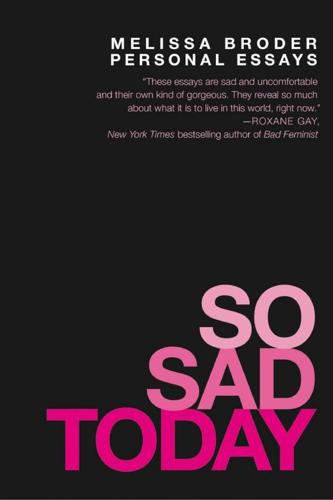
So Sad Today: Personal Essays
by
Melissa Broder
Published 15 Mar 2016
But it’s a lot easier to rely on a tangible fix than it is to rely on a nebulous spirit, a quiet voice, deep inside yourself. I am wired to reach for shiny things. Physically, the Botox has shaved off a few years. I’m definitely fooling something. Spiritually, however, the Botox has had no positive effects. I still feel fucked a lot. I’m not whole. I’m human. Google Hangout with My Higher Self Me: yo Me: r u there? Me: i feel empty and worthless :( Higher self: i kno Higher self: u only come 2 me when u feel shitty Higher self: u don’t rly love me Higher self: jk Me: i feel like i’m not ok Me: i feel like i’m not good Higher self: gurl u r good Higher self: u contain -------> infinite goodness Me: idk Me: i feel like plants, babies, trees, the ocean, animals, and the moon don’t like me Me: like they r talking shit or something Me: like they can see through me and kno that i am fundamentally fucked Higher self: ok u need 2 chill the fuck out. u need 2 sit still. u r already in the light and u don’t even see it. u need 2 start sexting the light bb. send nudes 2 the light Me: but i feel like my darkness makes me cool Me: what if i fall in love w the light and then other ppl judge me?
…
Sign Up Or visit us at hachettebookgroup.com/newsletters Contents Cover Title Page Welcome Dedication Epigraph How to Never Be Enough Love in the Time of Chakras I Want to Be a Whole Person but Really Thin Help Me Not Be a Human Being Love Like You Are Trying to Fill an Insatiable Spiritual Hole with Another Person Who Will Suffocate in There Honk If There’s a Committee in Your Head Trying to Kill You I Took the Internet Addiction Quiz and I Won I Don’t Feel Bad About My Neck The Patron Saint of Nicotine Gum My Vomit Fetish, Myself One Text Is Too Many and a Thousand Are Never Enough Hello 911, I Can’t Stop Time Google Hangout with My Higher Self The Terror in My Heart Says Hi Never Getting Over the Fantasy of You Is Going Okay Keep Your Friends Close but Your Anxiety Closer I Told You Not to Get the Knish: Thoughts on Open Marriage and Illness Under the Anxiety Is Sadness but Who Would Go Under There Acknowledgments About the Author Also by Melissa Broder Newsletters Copyright Copyright Copyright © 2016 by Melissa Broder Cover design: Brigid Pearson Cover copyright © 2016 by Hachette Book Group, Inc.
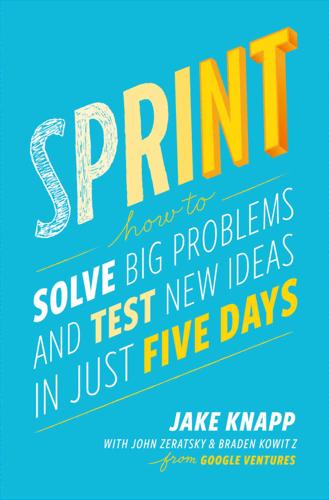
Sprint: How to Solve Big Problems and Test New Ideas in Just Five Days
by
Jake Knapp
,
John Zeratsky
and
Braden Kowitz
Published 8 Mar 2016
I was only in town for a few days, so we worked as fast as we could. By the end of the visit, we had a working prototype. We emailed it to our coworkers and started using it for meetings. After a few months, the whole company was using it. (Later, a polished and improved version of that web-based app launched as Google Hangouts.) In both cases, I realized I had worked far more effectively than in my normal daily routine or in any brainstorm workshop. What was different? First, there was time to develop ideas independently, unlike the shouting and pitching in a group brainstorm. But there wasn’t too much time. Looming deadlines forced me to focus.
…
A., 229 feedback, 207 reaction vs., 169–70 finance experts, 34 Fitbit, 171 fitness training, automated, 171–74 FitStar sprint, 171–74, 189, 206 Flatiron Health sprint, 60–64, 76, 85, 88, 100–101, 153, 176, 224 Flickr, 143 focus, sprint process emphasis on, 32 Foundation Medicine sprint, 16, 176–77, 185 FoundationOne, 176 Freeman, James, 21–25, 30, 103 Gebbia, Joe, 210–11 genetic analysis, in cancer treatments, 176 George Mason University, 38 Getting Things Done (Allen), 108–9 Giarusso, Serah, 24, 103 Glitch (video game), 128–29, 143 Gmail, 2, 4 goals, ambitious, 229 goals, long-term, 55–57, 61, 67, 110, 138, 141, 147 dangerous assumptions and, 56–57 in Flatiron Health sprint, 62–63 Goldilocks quality, 170, 207 Gonzalez, Tony, 171–72 Google, 60 experimentation culture of, 1 self-driving car of, 16 Google Earth, 83 Google Forms, 121 Google Hangouts, 3 Google Search, 4 Google Ventures (GV), 4–6, 7, 12, 15, 16, 60, 85, 113, 130, 171, 176, 201, 231 Google X, 4 Grace, Merci, 130, 131, 143–44, 152, 156, 175, 216–17, 221, 222 Graco sprint, 27–28 Green, Bobby, 76, 85, 86 Grijalva, Dave, 171–74 Harry Potter and the Philosopher’s Stone (Rowling), 196, 196n heat map, in deciding process, 131, 132–35 high stakes, as challenge, 26 honesty, in deciding process, 139–40 hotels, guest satisfaction and, 10, 56 Howard, Ron, 53 How Might We notes, 68, 73–82, 110 in Blue Bottle sprint, 73–74 challenges and, 77–78 in Flatiron Health sprint, 76–78 maps and, 81–82 organizing, 79–80 prioritizing, 80–81 target and, 87 HTML, 184 Hurley, Chad, 6 IdeaPaint, 44 IDEO, 73 illusion, 165–66 see also façades Incredibles, The (film), 149 Indian Ocean, 84 industrial companies, sprints and, 27–28 Ingram, Alex, 62, 76 interruptions, productivity and, 38–39 Interviewer, 188, 190, 204–5, 217, 225 tips for, 212–15 interviews, 196–200, 201–15 being a good host in, 212 broken questions in, 214–15 context questions in, 202, 205–6 curiosity mindset in, 215 debriefing in, 202, 209–10 detailed tasks in, 202, 208–9 as emotional roller coaster for sprint team, 197 feedback in, 207 in FitStar sprint, 197, 206 in FitStar test, 208 five-act structure of, 202 ideal number of customers for, 197–99 introducing prototypes in, 202, 206–7 in One Medical sprint, 199–200 open-ended vs. leading questions in, 212–13 power of, 210–11 schedule of, 199 in Slack sprint, 217 team observation of, see interviews, learning from thinking aloud in, 207–8 welcome in, 202, 204–5 “why” questions in, 199–200 interviews, learning from: in Blue Bottle sprint, 223–24 in Flatiron Health sprint, 224 group note-taking in, 219–21 importance of real-time team observation in, 202–4, 218–19 looking for patterns in, 222 in Savioke sprint, 223 in Slack sprint, 220–21, 223 sprint questions and, 222–23 Invite Media, 60 iPads, 171–73, 178, 189 as banned from sprint room, 41 JavaScript, 184 Keynote, 171, 173, 175, 176, 177, 178, 184–85, 186 Knapp, Jake, 24, 27–28, 30, 47, 48, 60, 62, 76, 77, 85, 107n, 109 Kowitz, Braden, 5, 22, 23–24, 30, 43, 60, 76, 156, 216 Kranz, Gene, 53, 55, 85 Lachapelle, Serge, 3 Lancelotta, Mary Pat, 176 Landauer, Thomas K., 198n laptops, as banned from sprint room, 41 Lau, Tessa, 11, 12, 178 lean development, 17 learning, see interviews, learning from Lightning Demos, 96–101, 110 Lord of the Rings, The (Tolkien), 59, 60 Lowe, David, 27 McKinsey & Company, 230 Makers, 187, 188 mapping the problem, 16, 59–67, 110, 230 in Blue Bottle sprint, 23–24, 65, 66 division of labor and, 101–2 experts and, 69–70, 76, 77 in Flatiron Health sprint, 62–63 How Might We notes and, 81–82, 85 in Savioke sprint, 10, 64–65, 66 steps in, 66 as story, 65–66 target and, 84, 85–86 Margolis, Michael, 5, 12, 60, 62, 201–2, 203, 204, 206, 208, 209, 212, 214, 216, 217 Maris, Bill, 4–5 markers, dry-erase, 75 marketing experts, 34 Maser, Mike, 171–73 “Mathematical Model of the Finding of Usability Problems, A” (Nielsen and Landauer), 198n mechanics, of product or service, 70–71 Medium, 6 Medium sprint, 224 Meehan, Bryan, 22 meetings, frustrations of, 127–28, 230 Microsoft Word, 186 Mid-Ocean Ridge, 83–84, 87 “Mind Reader, The” (Blue Bottle solution sketch), 104–6, 115 Mission Control, 53–54, 225 momentum, regaining, 26 Move Loot sprint, 113 movies, façades in, 165–66, 173 My Neighbor Totoro (film), 98 NASA, 54 Nest, 16 Newton, Alice, 195–96 Newton, Nigel, 195–96 New York Times, 15, 130, 152, 153, 188 Nielsen, Jakob, 197–98, 198n no-devices rule, 41, 110 Note-and-Vote, 146–47 note-taking: on interviews, 219–21 sketching and, 109, 110 see also How Might We notes Ocean’s Eleven (film), 29–30, 36, 37, 225 office supplies, for sprint rooms, 45 One Medical Group sprint, 180–82, 185–86, 199 opening scene, 188 OstrichCo, 139–40 paper, for sprint rooms, 44 paper coffee filters, 95–96 patterns, in customer reactions to prototypes, 222 permission, Facilitators and, 89 personal trainers, 171 phones, as banned from sprint room, 41 Photoshop, 184 Pitt, Brad, 29, 36 Pixar, 149 plate tectonics, 84 PlayStation, 178 Porter, Josh, 89 Post-It notes, see sticky notes PowerPoint, 184, 186 previous efforts, see existing solutions priorities, setting, 54–55 “Priority Inbox” project, 2–3 Procter & Gamble, 73 productivity, interruptions and, 38–39 progress, rapid, from sprint process, 31 prototype mindset, 168–69, 230 prototypes, prototyping, 16, 60, 183–90 actors and scripts in, 186 appearance of reality in, 169–70 Asset Collector in, 188 in Blue Bottle sprint, 25, 28, 104–6 Brochure Façades in, 185 Deciders and, 31, 32 deciding on, see deciding as disposable, 169 division of labor in, 183, 187 façades and, see façades Facilitator and, 187 in FitStar sprint, 189 focus on learning from, 169 in Foundation Medicine sprint, 185 Goldilocks quality in, 170 in Graco sprint, 27–28 Interviewer in, 188, 190 Makers in, 187 mindset and, 168–69 in One Medical sprint, 199 picking right tools for, 183–86 in Priority Inbox sprint, 3 Rumbles and, 143–47 in Savioke sprint, 9, 10, 11–12, 185 sketching and, 104–6 in SquidCo sprint, 30–31 Stitcher in, 183, 187, 189 storyboard scenes and, 188, 189–90 trial run in, 183, 189–90 universal application of, 169 using existing objects or spaces in, 186 Writer in, 187–88 questions: in interviews, 212–14 obvious, Facilitators and, 90 questions, finding answers to, 138, 141, 147 in Blue Bottle sprint, 23 in FitStar sprint, 171 in Flatiron Health sprint, 62–63, 88 in Foundation Medicine sprint, 176–77 in Graco sprint, 27–28 and learning from interviews, 222–23 in One Medical sprint, 180 role of sprints in, 15, 16–17, 67 in Savioke sprint, 9, 10, 178 in Slack sprint, 175, 216–17, 222–23 Starting at the End and, 55–58 surface and, 28 see also How Might We notes reaction, feedback vs., 169–70 Relay robot, 7, 14, 56 eyes of, 97–98 guest satisfaction and, 10 guests’ responses to, 13 “personality” of, 11, 13, 71, 178, 179 risk-taking, 156, 166 robot helpers, human interaction with, 8–9, 10 Rogers, Jan, 46–47 Rogers, Loran, 46, 48 rooms, for sprints, 41–45 Rumbles, 143–47, 223 in Blue Bottle sprint, 146 Deciders in, 145, 146 fake brands in, 145–46 Note-and-Vote in, 146–47 single-prototype vs., 145, 147 in Slack sprint, 144, 145 Savioke Labs sprint, 7–15, 26, 33, 64, 66, 71, 119, 145, 153, 157, 178–79, 185, 223 better guest experience as goal of, 56, 84 schedule, clearing space for sprints in, 10, 39, 40–41 screener surveys, in recruiting test customers, 119–21 Scribe, in speed critique, 135–36 Seattle, Wash., 229 Sharpies, 75n simplicity, in maps, 66 sketching, 16, 60, 102, 103–18 abstract ideas and, 106–7 in Blue Bottle sprint, 24, 103–4, 108, 113 Crazy 8s exercise in, 109, 111–13 in Move Loot sprint, 113 prototypes and, 104–6 of rough ideas, 109, 111 solution sketches in, see solution sketches taking notes in, 109, 110 as working alone together, 107–9 Slack sprint, 129–31, 143–44, 149–58, 175, 216, 217, 220–21, 222, 223 expansion into new markets as challenge for, 129–30 Smithsonian Institute, 228 snacks, for sprints, 45 solution sketches, 109, 114–18 anonymity of, 114–15 in Blue Bottle sprint, 116–17 deciding on, see deciding as explanatory, 114 importance of words in, 115 maybe-laters in, 142, 155 single-scene, 114, 117 in Slack sprint, 130 sticky notes and, 114 storyboard format in, 114, 116 titles for, 115 winners in, 141–42 speed critique: in deciding process, 131, 135–37 Scribe in, 135–36 sprints: checklists for, 232–49 clearing calendars for, 10, 39, 40–41 concept of, 3 daily schedule in, 39, 40–41, 90–91 deciding process in, see deciding façades in, see façades as five-day process, 5–6, 9, 16, 40–41 frequently asked questions about, 251–57 learning from, see interviews, learning from no-devices rule in, 41, 110 origin of, 2–5 prototypes in, see prototypes, prototyping questions to be answered in, see questions, finding answers to; tests, real-world risk-taking in, 166 Rumbles in, 143–47 setting priorities in, 54–55 storyboards in, see storyboarding time allocation in, 38–41 timers for, 46–48 uncovering dangerous assumptions through, 56–57 universal application of, 229–30 versatility of, 5–6, 229–30 wide application of, 5–6 working alone together in, 107–9 work rooms for, 41–45 Squarespace, 186 SquidCo sprint, 30–31, 32, 139 Starting at the End, 5, 53–58 in Apollo 13 rescue, 53–54 in Blue Bottle sprint, 55–56, 57 in Flatiron Health sprint, 62–63 long-term goals and, 55–57, 61, 62–63, 67 questions to be answered in, 55–58, 62–63, 67 in Savioke sprint, 56 setting priorities in, 54–55 startups, 231 sprints and, 4–5, 15–16, 27 Starwood, 9 sticky notes: poster-size, 43, 44 solution sketches and, 114 see also How Might We notes Stitcher, 187, 189 storyboarding, 125, 148–58 “artist” for, 151, 154–55, 156 assigning prototyping tasks from, 188, 189–90 in Blue Bottle sprint, 153, 157, 188 competitors’ products in, 154 copywriting in, 155–56 Decider in, 156 detail in, 156 in Flatiron Health sprint, 153 maybe-laters in, 155 opening scene in, 152–53 resisting new ideas in, 155 risk-taking in, 156 in Savioke sprint, 153, 157 in Slack sprint, 149–53, 156 solution sketches as, 114, 116 test-time limits and, 157 story-centered design, 5 strategy, 70 straw polls, 87–88 in deciding process, 131, 138–40 successes, flawed, 223–24 supervotes, 143, 144 in deciding process, 131, 140–42, 143 surface, as contact point between product and customer, 28 target, 82, 83–88 in Blue Bottle sprint, 84–85, 101 Decider and, 31, 32, 85–88 in Flatiron Health sprint, 85–87, 88 How Might We notes and, 87 key customers in, 85–86 key event in, 85–86 maps and, 84, 85–86 in Savioke sprint, 84 straw polls and, 87–88 Tcho, 97 team processes, 1 teams, 29–37, 218 in Blue Bottle sprint, 22–24, 33 challenges and, 68 choosing members of, 33, 34–36 Deciders in, see Deciders division of labor in, 101–2 experts and, see Ask the Experts Facilitators in, see Facilitators ideal size of, 33 interviews observed by, see interviews, learning from in Ocean’s Eleven, 29–30 in Savioke sprint, 9–11, 33 in SquidCo sprint, 30–31 troublemakers in, 35 tech/logistic experts, 34 “Tenacious Tour, The” (Slack solution sketch), 144, 175, 217, 220–21, 222 tests, real-world, 5, 16, 231 in Blue Bottle sprint, 25 competitors’ products in, 154 Deciders and, 31, 32 in FitStar sprint, 173–74 in Graco sprint, 27–28 interview in, see interviews recruiting customers for, 119–23, 197 in Savioke sprint, 10, 11–13, 15 time units in, 157 Tharp, Marie, 83–84 3D printing, 27, 185, 186 tight deadlines, 109 time, allocation of, for sprints, 38–41 timers, in deciding process, 136, 138 Time Timers, 46–48 Tolkien, J.

The Year Without Pants: Wordpress.com and the Future of Work
by
Scott Berkun
Published 9 Sep 2013
An excellent example of staying out of the way is that when teams were formed at Automattic, a major question was how they should collaborate. At first everyone stayed with P2s, IRC, and Skype purely out of inertia, but soon teams, on their own, tried new things. One team switched to Skype video. Another tried Google Hangouts. There was no official mandate or policy. Each employee, and each team, decided which tools to try and which to keep. The tools were never of primary importance, although Toni and Matt made clear we had their support to buy the ones we needed and try them out. But what always mattered most was went on in each employee's mind.
…
Deadlines: lack of; for launching Jetpack at SXSW; short, impact on teamwork; when writing The Death and Life of Great American Cities(Jacobs) Decision making Deep dive technique Defensive management Democratizing publishing Design: complex, of WordPress; interface, done first; success determined by; vision needed for coherence of Dogpatch Labs Donkin, Richard Dorman, Anne Double down DreamHost E EMACS E-mail: Automattic communication via; disadvantages of; no mandate on using; notifying blogger of response to blog; notifying blogger of visitor subscribing to blog; observations about company sent to Mullenweg via; used with P2s; WordPress.com support via E-mailopathy Emotions Expensify Experiments: author's mission to include; with benefits' effect on performance; at Budapest company meeting; as essential; and fear of new ideas; at Hawaii meet-up; with new communication tools; shift to teams as; team meet-ups as opportunities for; teams and team leads as F Face-to-face interactions: author's preference for; author's trip to San Francisco for; cost of meet-ups for; at mini-team meet-up in San Francisco; necessity of Feedback Fogel, Karl Follow the Sun Fontainhas, Zé Fox, Jon Friction Functionality Future of work: creatives vs. supporters and; focus on results vs. traditions in; impossibility of predicting; increasing prevalence of working remotely; meaningful work in; self-sufficient passionate employees and G General public license (GPL) Gibson, William GitHub GoDaddy Google Google Docs spreadsheet Google Hangouts Gravatar Griz (dog) H Happiness Engineers (HE) Harstein, Ran Hawaii. See Team Social meet-up (Hawaii) Highlander: as common name for projects; deciding to take on; launch of; mapping work for; as project to unify comments on WordPress.com; success of; temporarily put aside; work begun on, in Athens; work on, at Portland meet-up Hiring procedure: doing trial work as; to get self-sufficient, passionate employees; importance of match between culture and; lack of transparency about; remote; unique for author; voice used in Hirschberg, Jerry Hirshland, Mike The History of Work(Donkin) HostGator Hosting companies Hotel Electra.
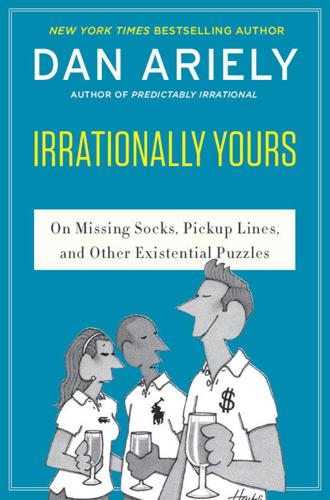
Irrationally Yours: On Missing Socks, Pickup Lines, and Other Existential Puzzles
by
Dan Ariely
and
William Haefeli
Published 18 May 2015
I suspect that this is the case, which means that maybe we should all start picking projects that are smaller, and more self-contained. Habits, Effort, Goals ON THE ART OF MULTITASKING “Are you multitasking me?” {Illustrations © 2015 William Haefeli} Dear Dan, I spend a lot of time on not-very-interesting conference calls using Skype and Google Hangouts. I usually try to answer emails during this time, so I turn off the video capability, so that no one can see me. On top of that I try to type quietly, so that no one can hear. But the sound of the keyboard seems to vibrate through the computer, and I suspect that the other participants know that I am not really paying attention.

Because Internet: Understanding the New Rules of Language
by
Gretchen McCulloch
Published 22 Jul 2019
Public chatrooms had a niche appeal: the average internet user was more likely to encounter chat slightly later and with a person they already knew via instant messaging or chat apps, such as the first wave of ICQ, AOL Instant Messenger (AIM), or MSN Messenger, and the second wave of Gchat (which became Google Hangouts), Facebook Messenger, iMessage, and WhatsApp. But even between the same two people, overlap is common in chat—each person may introduce a topic around the same time, and then since they both hit send at once, they can both start responding to the opposite topic in parallel. What’s curious is that we’ve retained this essential paradigm of chat for nigh on four decades now, even as many individual chat platforms have come and gone.
…
compounds, 131–32 exclamation marks, 123–25 exclamation marks, inverted, 133 Facebook American adults using, 85–86 and Cambridge Analytica controversy, 22–23 founding population of, 79–80 and Full Internet People cohort, 79 name treatment for, 48 in non-English languages, 270 and Old Internet People cohort, 74 and platform switching, 103 and Post Internet People cohort, 93, 100 and Pre Internet People cohort, 93 real names used on, 80 status updates on, 222, 227, 229–34 and strong/weak ties in, 39 third-place functions of, 228 time spent on, 222 usage differences among cohorts, 81 vaguebooking on, 232–33 Facebook Messenger, 213 FaceTime, 94 Fagyal, Zsuzsanna, 38 Fahlman, Scott, 177, 178 familects, 26–27, 38 fanfiction, 262 faxlore, 255, 256 FidoNews, 75 First Wave of internet people, 65–75 Fixing English (Curzan), 45–46 Flickr, 129 flirting, 105–6 flower-in-hair kaomoji, 179 formal language/writing disembodied nature of, 13 and effects of informal language use, 58 in essays, 195 expectations for, 14–15 gesturing in, 12–13 and informal/formal language mix of youth, 59–60 punctuation of, 152 and time to revise, 110 forums, 68 founder effect, 65 Freeman, Nina, 79, 80 friendliness, conveying, 124 friendships on the internet, 63, 74–75 Friendster, 103 Full Internet People cohort, 78–84 and context collapse issue, 103 and email, 90, 92–93 and memes, 246, 252 social function of internet for, 77, 78, 82, 100, 103 typing skills of, 122–23 “fyi” (for your information), 72 Gawne, Lauren, 159, 160 Gchat, 86, 100, 213, 217 gender, 33–35 GeoCities, 78, 79 geographic coordinate tags on Twitter, 23 gesturing co-speech function of, 165–66 emblem gestures, 161–65, 167, 172–73 in formal/informal speech, 12–13 illustrative gestures, 166–68, 173 movement conveyed by, 192 repetitions in (beats), 171–72 gifs customization of, 14 emblems displayed with, 164 emoji’s advantages over, 184 as emotional currency, 190 as indication of active listening, 189 Gilliéron, Jules, 18 Gmail, 182 Godwin, Mike, 239, 251 Godwin’s Law, 239, 251 Goldman, Eric, 193 Google Docs, 49 Google Groups, 69 Google Hangouts, 213 Gosling, Ryan, meme based on, 245, 247 grammar checkers in word processors, 45–46 Grant, Harley, 144–45 “gr8” (great), 149 Great Good Place, The (Oldenburg), 220 greetings, 200–207, 235 Grieve, Jack, 24 Grumpy Cat meme, 245, 247 gun emoji, 194 Hacker’s Dictionary, The, 71 Hale, Constance, 87 hallways as third places, 221 Hancock, Jeffrey, 149 Harrison, George, 96–97 Harry Potter and the Cursed Child (Rowling), 192–93 Hartzog, Woodrow, 230–31 Harvard Dialect Survey, 20 hashtags, 38, 55–56, 128–30, 145 hate speech, 234 Heath, Maria, 115 “hella,” 23 “hello” (greeting), 200–202 Herring, Susan, 34–35, 102, 185–87 “hey girl” meme, 245, 247 High Expectations Asian Father meme, 257 high school cliques, linguistic distinctions in, 27–28 Hitler/Nazi comparisons on the internet, 239, 251 homepages, personal, 78, 79 Houseparty, 235 HTML, 69 humor, characters marking, 176–77 Hwang, Tim, 247 hyphens as separation characters, 113 IBM, 151 Icelandic, 36–38, 270–71 “ICQ” (I seek you), 78, 213, 226 ICT (information and communications technologies), 84 identity, online, 74, 80–81 “ikr” (I know, right?)

Reset
by
Ronald J. Deibert
Published 14 Aug 2020
Says Lepawsky, “No amount of post-consumer recycling can recoup the waste generated before consumers purchase their devices.”340 * * * Work-from-home and social isolation rules surrounding the COVID crisis prompted a huge increase in demands on the communications ecosystem. Uses of Zoom, FaceTime, Google Hangouts, Skype, Microsoft Teams, and other means of teleconferencing ballooned as friends and family checked in virtually and office routines migrated into makeshift bedroom and living room offices. In the evenings, citizens around the world flocked to already popular streaming video services like Netflix, or to online games like Doom and World of Warcraft.
…
See also biometric data China and, 163–164, 165–167 fact-checking, 83, 87, 130, 267–268, 269 Farrow, Ronan, 254 Feldstein, Steven, 166 Ferguson, Andrew, 174–175 FinTech, 61–62 “Five Eyes” alliance, 25, 40 5G technology, 13, 15–16, 82 Foreign Intelligence Surveillance Court, 285–286 Foxconn, 225, 227, 228, 229–230 Freedom House, 200 Freedom Online Coalition, 326 Frischmann, Brett, 96 Front de libération du Québec (flq), 192, 198 Fuller, Buckminster, 263 Gabunada, Nic, 125 games (online), 63–64, 76, 98–99, 102, 105–106, 232 Gamma Group, 150–151 General Electric, 181–182 GhostNet, 204 Giant Oak Inc., 183 GlaxoSmithKline, 71–72 Global E-waste Monitor, 243 Goldman, Eric, 172 Google, 60, 108, 130, 234, 306 data harvesting by, 51, 65, 182–183 and the environment, 234, 239, 240, 241 Google Hangouts, 231–232 Google Maps, 15, 51, 52, 64 monetization of, 48, 64, 130, 241 privacy/security issues, 17, 44, 51, 66, 77–78, 289–290 surveillance by, 48, 50, 51–52, 60 governments. See also specific countries hacking by, 17, 122–123, 149–150, 290 and psy-ops, 115–128, 295–296 restraint mechanisms and, 284–289, 293, 326–327 and social media, 112–114, 118–127 The Great Hack (documentary), 118 Greene, Amanda, 54 Greenpeace, 239–241 Greenwald, Glenn, 36 Guatemala, 116–117 Gunitsky, Seva, 200–201 Gutenberg, Johannes, 23 Habermas, Jürgen, 90–91 hacking, 147.
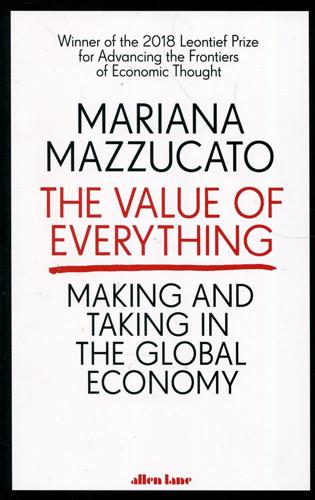
Value of Everything: An Antidote to Chaos The
by
Mariana Mazzucato
Published 25 Apr 2018
A strong source of increasing returns to scale necessarily expands companies. Google's size is a direct result of the network effects typical of Internet-based services. Google is not just a search engine. It is also an email address (Gmail), a conference call maker (Google Hangout), a document creator and editor - all designed to maximize the advantages of sticking to Google: you cannot use Google Hangout without a Gmail address. What's the problem? Giant online firms like Facebook, Amazon and Google are often portrayed by their managers and by their apologists as ‘forces for good' and for the progress of society rather than as profit-oriented businesses.61 Excited advocates have talked of a rising and revolutionary ‘sharing economy', or even of ‘digital socialism',62 advancing a rosy view according to which digital platforms ‘empower' people, giving us free access to a wide range of services, from social networking to GPS positioning and health-monitoring.
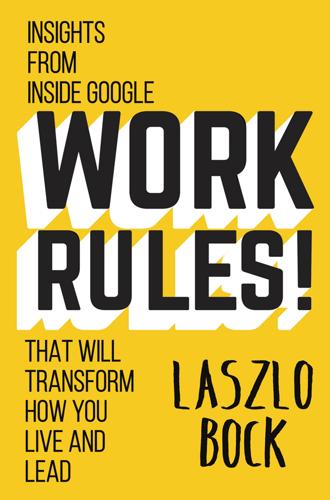
Work Rules!: Insights From Inside Google That Will Transform How You Live and Lead
by
Laszlo Bock
Published 31 Mar 2015
These are much harder to conduct than in-person interviews because it’s difficult to build rapport and pick up on nonverbal cues. Phone interviews are particularly challenging for people who are not fluent in English (the language of the company is English), as it’s harder to make yourself understood over a phone. We prefer to use Google Hangouts, which provide video interaction and allow screen and whiteboard sharing so that technical candidates and interviewers can write and review software code together. Hangouts require no special equipment, conference centers, or downloads. Candidates simply log on to Google+ and receive a pop-up inviting them to join a Hangout: instant video conference.
…
—says it will not support Tibetans being viciously oppressed by China. You, President Zuma and your government, do not represent me.” Loren Groves, a Noogler who had just launched his first product at Google a week earlier, was dispatched to Tibet and then to South Africa. He arranged a meeting between the two men via Google Hangout, allowing them to have a face-to-face conversation despite being thousands of miles apart. This was the centerpiece of the celebration on October 8.95 The next day we ran a full-page ad in the New York Times. Advertisement in the New York Times celebrating the successful Hangout between the Dalai Lama and Desmond Tutu. © Google, Inc.

Bit by Bit: How P2P Is Freeing the World
by
Jeffrey Tucker
Published 7 Jan 2015
I mean, you are probably right, but let’s just say that I think you made this whole thing up. I can dispute this in front of the judge?” “Yes, sir, you may. Just see the court date.” “And where is this court?” “Right here in this county.” Of course I had to explain to him that I was headed to the airport and that I live 1,000 miles away. I asked whether I could use Skype or Google Hangout to attend my hearing. “I’m sorry, sir, you have to attend in person.” I continued on: “So I have to drive to Atlanta, catch a flight to Dallas, rent a car and drive 100 miles south on some particular date in order to have my rights realized? You do understand that this would cost me probably two days of work and as much as $1,000?”
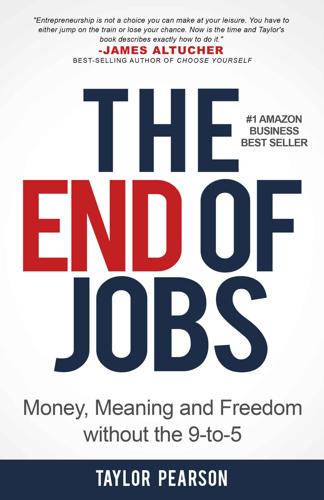
The End of Jobs: Money, Meaning and Freedom Without the 9-To-5
by
Taylor Pearson
Published 27 Jun 2015
Today, you can search for them and find a specific person that has “editor” and “craft beer” in their profile. The same improvements in technology that have made hiring easier also made managing and working with remote teams easier. Online video conferencing has become ubiquitous. Skype pioneered free video calls after launching in 2003 and other software like Google Hangouts and GoToMeeting have followed, making it possible to see and talk with anyone with an internet connection and a smartphone. Which, as of 2015, was 1.75 billion people and rising fast. Other companies have exploded around remote communication and management. Slack, founded in 2013, was valued at $1 billion within 18 months of their launch.
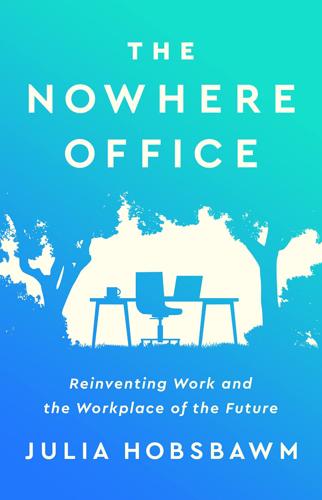
The Nowhere Office: Reinventing Work and the Workplace of the Future
by
Julia Hobsbawm
Published 11 Apr 2022
Smaller, simpler teams see problems better. It makes sense to simplify systems when so much management energy will need to go into fresh challenges: scheduling hybrid working, reframing the measuring of performance. Many organisations are using daily check-ins with their team on Zoom or Microsoft Teams or Google Hangouts to cut through complexity and just ask each other: how is it going? Sometimes the old systems are the best. But sometimes old systems themselves need clarifying and reducing. None more so than the one which is front line in managing the workforce overall: HR. Human Remains Ask any Generation Z what it is like to apply for a job these days.

Futureproof: 9 Rules for Humans in the Age of Automation
by
Kevin Roose
Published 9 Mar 2021
Even before the pandemic, companies were already experimenting with ways to make remote workers feel more socially connected. At GitLab, an open-source collaboration platform, remote workers are encouraged to schedule “virtual coffee breaks”—purely social video conferences—and join the “random room,” an always-on Google Hangout that functions as a kind of virtual water cooler. At the Seattle-based software company Seeq, one employee per day is responsible for “sharing time,” a fifteen-minute video presentation about a nonwork topic of their choice. Automattic, the all-remote maker of WordPress, organizes a once-a-year “grand meetup,” a weeklong retreat during which the company’s seven hundred–plus employees work on collaborative projects by day, and go on social outings at night.

The Open Organization: Igniting Passion and Performance
by
Jim Whitehurst
Published 1 Jun 2015
To add a new service, like call-waiting, the operator had to reprogram the central switch, an expensive and risky endeavor. Screw it up and you could bring down the whole network. Not surprisingly, innovation proceeded at a snail’s pace. Today, the web hosts hundreds of web-based communication services including Apple’s iMessage, WhatsApp, Snapchat, Kakao Talk, Google Hangout, WeChat, and Grasshopper. On Skype alone, users spend more than 2 billion minutes communicating each day. The web has also spawned thousands of special interest groups, like wrongplanet.net, a site dedicated to improving the lives of individuals with autism. The community’s eighty thousand members have posted more than 1.2 million comments on the site’s general discussion board.

The End of Traffic and the Future of Transport: Second Edition
by
David Levinson
and
Kevin Krizek
Published 17 Aug 2015
Driving to work five days a week and driving to the big box store for detergent are both disappearing. The Amazon Dash button336 demonstrates how we might take care of some of this. Parents will soon be able to order a self-driving car to take their children to soccer practice. Relying on descendants of apps like Skype and FaceTime and Google Hangouts, workers will meet colleagues periodically at both offices and random third places. Yet to crystalize effects will be rendered by 3-D printers. Stimulus Effects? While the traditional workplace will shrink in size and importance, it will not vanish. Work, like shopping and much of life, has a social as well as economic function.
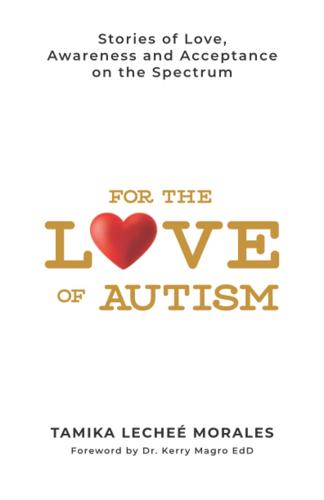
For the Love of Autism: Stories of Love, Awareness and Acceptance on the Spectrum
by
Tamika Lechee Morales
Published 23 Apr 2022
My doctorate was completely online minus two weeks each summer for our cohort’s in-person learning. At first, this led to challenges in building rapport, similar to my master’s online classes. Thankfully, though, having a passion for technology at this point, I instantly bonded with most of my cohort via Google Hangouts. As I tell the autism families I work with, embracing technology can make a world of difference, no matter how old your child on the spectrum is. Three years later, I was officially Dr. Kerry Magro, EdD. Along with writing, speaking, and consulting, I now live independently, am a nonprofit founder, have had my own car (driving was a challenge initially), have had seven girlfriends (I promise I had them one at a time!)
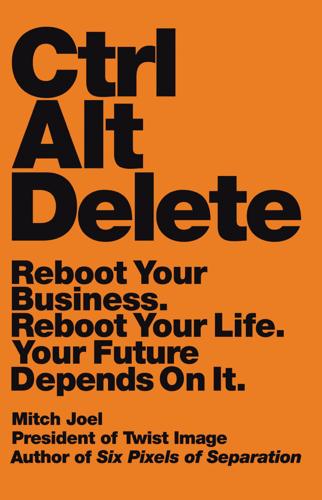
Ctrl Alt Delete: Reboot Your Business. Reboot Your Life. Your Future Depends on It.
by
Mitch Joel
Published 20 May 2013
But Cisco is now predicting that mobile data use worldwide is poised to grow to more than twenty times the current usage by 2015. It would be interesting to see what the prediction is for voice. As we get more and more connected, not only do email, text messaging, and chat start chewing into the voice usage, but it’s clear that FaceTime, Google Hangouts, mobile Skype, and other soon-to-follow products could make voice calls as relevant as sending a letter in the mail (with all due respect to the pains that the postal industry is currently facing). So where’s the true purgatory in all of this? Mobile networks versus Wi-Fi versus telecommunications companies.

The Geek Feminist Revolution
by
Kameron Hurley
Published 1 Jan 2016
As internet bandwidth has increased, we’ve entered the age of the quick video, the vlogger, the YouTube sensation, the Skype session. I’ve felt an increased pressure, as a writer, to not only go out in public but to widely share my public image in ways that are often beyond my control. I’ve been asked more and more to complete video projects, not just for fiction endeavors—acceptance speeches, video blogs, Google hangouts, taped panels, and the like—but also for job interviews. Yes, really. I realized, with increasing unease, that being both female and fat were two huge strikes against me in any video medium, no matter what I thought of myself. I was going to have to be twenty times as brilliant with a waggling chin than my male counterparts.
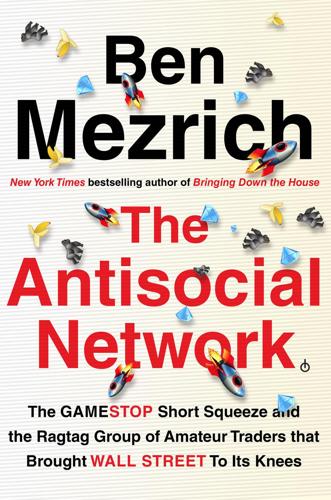
The Antisocial Network: The GameStop Short Squeeze and the Ragtag Group of Amateur Traders That Brought Wall Street to Its Knees
by
Ben Mezrich
Published 6 Sep 2021
If Robinhood’s meteoric rise had taught him anything, it was that shit happened fast; close your eyes, and you never knew how much was going to change before you opened them again. Even so, the messages—from Orlando, of all places—that Vlad saw flashing across his phone’s screen caught him by surprise. Before he even realized it, he was up out of the bed and sprinting across the carpet toward his computer. From the messages and the e-mails, it was a quick jump to a Google Hangout, where a group of his highest-level employees were already waiting for him. Jim in Orlando, of course, and a handful of execs from clearing, trading, and legal. Jim was leading the show, not only because he had the expertise to understand what the hell was going on, but because he’d already been mentally dealing with the disaster for a few hours now.

Yes Please
by
Amy Poehler
We would call each other on our dial phones and stretch the cord down the hall, lying on our stomachs and discussing Michael Jackson’s moves, George Michael’s facial hair, and that scene in Purple Rain when Prince fingers Apollonia from behind. Moments came and went, and if you missed them, you were shit out of luck. That’s why my parents went to a M*A*S*H party and watched the last episode in real time. There was no next-day M*A*S*H cast Google hangout. That’s why my family all squeezed onto one couch and watched the USA hockey team win the gold against evil Russia! We all wept as my mother pointed out every team member from Boston. (Everyone from Boston likes to point out everyone from Boston. Same with Canadians.) We all chanted “USA!” and screamed “YES!”
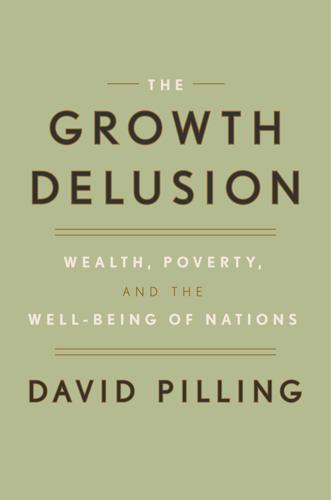
The Growth Delusion: Wealth, Poverty, and the Well-Being of Nations
by
David Pilling
Published 30 Jan 2018
Virtually the whole call was taken up with the subject of how much this was costing and how he’d soon have to hang up. Long-distance calls were stressful and unsatisfactory. These days, if there is an Internet connection people can communicate for free for an unlimited amount of time. Services like FaceTime and Google Hangouts mean they can see each other in real time too. People can browse Facebook and chat to their friends, they can send out messages on Twitter (particularly useful if they’ve been elected to high office), or look up information on Wikipedia (ditto). Wikipedia, which theoretically can bring all human knowledge to anyone with an Internet connection, is valued at precisely zero.

The Eureka Factor
by
John Kounios
Published 14 Apr 2015
This principle is actually quite profound. Hundreds of years ago, most people lived in small villages and rarely traveled far from home. They couldn’t read, so they had little awareness of the larger world beyond their community. Now, travel is common, and advancing technology is fueling rapid globalization. Millions use Skype, Google Hangouts, and other Internet services to hold live teleconferences with people all over the world. People watch international television programs and videos on cable, satellite TV, and the Internet. When a consumer in the United States picks up the telephone to call customer service, she may well speak to someone in a call center in India.

The Glass Cage: Automation and Us
by
Nicholas Carr
Published 28 Sep 2014
,” Guardian, August 30, 2013, theguardian.com/technology/shortcuts/2013/aug/30/amanda-rosenberg-google-sergey-brin-girlfriend. 26.Weiser, “Computer for the 21st Century.” 27.Interview with Charlie Rose, Charlie Rose, April 24, 2012, charlierose.com/watch/60065884. 28.David Kirkpatrick, The Facebook Effect (New York: Simon & Schuster, 2010), 10. 29.Josh Constine, “Google Unites Gmail and G+ Chat into ‘Hangouts’ Cross-Platform Text and Group Video Messaging App,” TechCrunch, May 15, 2013, techcrunch.com/2013/05/15/google-hangouts-messaging-app/. 30.Larry Greenemeier, “Chipmaker Races to Save Stephen Hawking’s Speech as His Condition Deteriorates,” Scientific American, January 18, 2013, www.scientificamerican.com/article.cfm?id=intel-helps-hawking-communicate. 31.Nick Bilton, “Disruptions: Next Step for Technology Is Becoming the Background,” New York Times, July 1, 2012, bits.blogs.nytimes.com/2012/07/01/google’s-project-glass-lets-technology-slip-into-the-background/. 32.Bruno Latour, “Morality and Technology: The End of the Means,” Theory, Culture and Society 19 (2002): 247–260.

Exponential Organizations: Why New Organizations Are Ten Times Better, Faster, and Cheaper Than Yours (And What to Do About It)
by
Salim Ismail
and
Yuri van Geest
Published 17 Oct 2014
Such drag on costs and operations is simply not acceptable in an Exponential Organization—or, indeed, for any company trying to compete in the 21st century. Telepresence has been around for many years in the form of videoconferencing. Although videoconferencing was quite a hassle in the past, an organization can now leverage services such as Skype and Google Hangout, which are fast, easy to use and available on every device. Telepresence enables employees to work proactively from any location and interact on a global scale, reducing travel costs and improving well-being. Even greater improvement comes from Telepresence robots such as Beam, from Suitable Technologies, and Double Robotics, which leverage the user’s tablet.

Lurking: How a Person Became a User
by
Joanne McNeil
Published 25 Feb 2020
With this shift, Google no longer has to associate with “books” and “libraries” to articulate its company mission. If Google had ever been sincere in its desire to mirror the world, the company’s carelessness and lack of standards hindered its execution. In 2014, I was part of a panel discussion organized by the Institute of Contemporary Arts (ICA) in London and hosted remotely over Google Hangouts, as a collaboration between the museum and the Google Art Project. While I was assembling notes for this book, I went back to the video to recall something another panelist had said. I found the video on the website for the ICA, with the familiar black embed rectangle. But when I pressed play, there was a notice on a blank screen that read, “This video is unavailable.”

This Chair Rocks: A Manifiesto Against Ageism
by
Ashton Applewhite
Published 10 Feb 2016
There’s plenty of internalized ageism in the assumption on the part of older people that they’re too old to learn how to maneuver in a wired world, or don’t want to bother. My mom, who typed hundreds of long and entertaining letters over the years, claimed she couldn’t get the hang of e-mail. Pia Louise hosts a radio show called Living Portraits, and requires her guests to participate via Skype or Google Hangout. “I feel people my age, fifty-plus, should keep up with technology. Instead I find they respond that ‘they have no need for it,’” she wrote. “Yikes! What do you think?” Here’s my response on my Q&A blog, Yo, Is This Ageist? Because it applies to all guests, your policy isn’t ageist. It’s your prerogative, and probably a technical necessity.
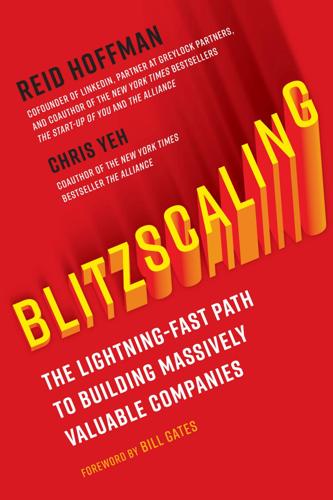
Blitzscaling: The Lightning-Fast Path to Building Massively Valuable Companies
by
Reid Hoffman
and
Chris Yeh
Published 14 Apr 2018
Communications tools like Slack not only provide a medium where all teammates participate on the same terms but also allow for asynchronous communication, which helps overcome time zone differences. Another approach some companies take is to set up a 24/7 videoconference using tools like Skype or Google Hangouts to simulate being in the same room. These informal bonds remain a critical part of the communications process, even as your firm grows into a global giant. Human beings are social animals, and the bonds between coworkers and teammates require regular dialogue. However, as early as the Tribe stage, you will need to begin implementing processes to supplement the one-to-one dialogue.

Upscale: What It Takes to Scale a Startup. By the People Who've Done It.
by
James Silver
Published 15 Nov 2018
‘Communication became more challenging as we grew because we were no longer sitting around the same bank of desks, but we were sitting around four banks and then we were sitting across two offices, three offices, four offices… There’s no simple way to solve that, other than extreme communications: making sure that the communications are two-way dialogues and not just one-way broadcasts, and having regular contact - whether that’s through hangouts, stand-ups, or weekly one-to-ones with managers. ‘We’re a global business, and each functional team, including our exec team, meets over Google Hangout or on the phone every day just to catch each other up. Then we’ll have weekly bulletins and monthly “show and tells” so everyone around the business has the chance to see what’s new. We also have quarterly town halls, where everyone can ask questions and we can be transparent about strategic goals, financial performance and employee engagement, which we measure using the Net Promoter Score (NPS), giving us a regular pulse on how people are feeling about working within the business.
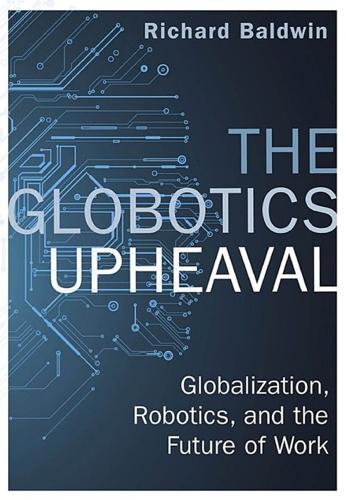
The Globotics Upheaval: Globalisation, Robotics and the Future of Work
by
Richard Baldwin
Published 10 Jan 2019
These new collaborative platforms are designed to facilitate all manner of team communication—everything from text chats, emails, and discussion groups to phone calls, Facebook posts, and multiperson video calls with screen sharing. Slack is one of the most popular and fastest growing platforms, but it has plenty of rivals including Facebook’s Workplace, Microsoft Yammer, Google Hangouts, Microsoft’s Teams, and a number of start-ups like HipChat, Podi, Igloo, GitHub, and Box. Also related is another set of new organizational tools that are not so new: project management software. Some of these have been around for years, but many (Wrike, Microsoft Projects, Basecamp, Workfront, etc.) are now designed to work with geographically dispersed teams.

Blood, Sweat, and Pixels: The Triumphant, Turbulent Stories Behind How Video Games Are Made
by
Jason Schreier
Published 4 Sep 2017
Sean Velasco, the messy-haired, charismatic leader of the team, took out a camera and started pointing it around the room, panning across three other tired faces: Nick Wozniak (the pixel artist), Ian Flood (a programmer), and Erin Pellon (the concept artist). On a call from Chicago was David D’Angelo (their second programmer), his head ever present on a laptop above the bookshelf thanks to Google Hangouts. A combination of anxiety and sleep deprivation was making them all jittery. “Look, everybody,” Velasco said to the camera. “We’re going to fucking launch the Kickstarter right now. . . . Oh my god. OK. Here it goes. Ready to launch.” Nick Wozniak pressed the button. “Oh my god, you have to confirm,” Velasco said.

Black Code: Inside the Battle for Cyberspace
by
Ronald J. Deibert
Published 13 May 2013
Google’s 2010 collection of private wifi data (described in the last chapter) was but one of several concerns users have had about the company’s ambitious data collection practices. If a user employs the full range of Google products – from Search to the Android mobile operating system to Gmail, Google Docs, Google Calendar, Google Hangout, and others (all of which are free) – Google’s consolidated management of the precise detailed information about each of its user’s movements, social relations, habits, and even private thoughts is truly frightening in scope and scale, especially in the event that any of these capabilities is abused, compromised in some way, or subject to external controls and manipulation.

How to Work Without Losing Your Mind
by
Cate Sevilla
Published 14 Jan 2021
Equally, being on camera for several calls a day can be exhausting, so if it’s just a quick catch-up that can be done with audio-only (what used to be known as a phone call), make that clear, too. ‘Can you see my screen?’ If you’re sharing your laptop screen for a presentation or to give a visual example to a client or a colleague, please lord turn off notifications. Make sure you don’t have Slack or Google Hangout pop-up notifications or, even worse, texts or WhatsApp messages coming through. It’s also a good idea to close all open tabs on your web browser, and to give a second glance over what you have saved in your bookmarks bar! Another element of screen sharing to keep in mind, is to remember you’re sharing your screen.

Life After Google: The Fall of Big Data and the Rise of the Blockchain Economy
by
George Gilder
Published 16 Jul 2018
Becoming a major supplier of VoIP, Berninger’s next venture, Vonage, reached a peak of 1.4 million customers in 2004. It was eventually palsied by specious but exhausting Verizon patent claims that extracted close to $150 million from the company. It was his experience with Hello Digital, though that made him a libertarian litigant. The existing Internet-only voice systems, such as Skype at Microsoft, Google Hangouts, and Facebook Messenger, work well enough, sometimes even superbly. But they fail to take advantage of the spontaneous convergence of interests on particular websites. They provide no additional sources of revenue for Web pages with independent content. And they fail to add the magic of high-definition voice.
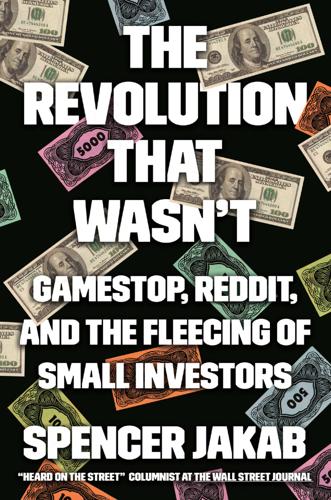
The Revolution That Wasn't: GameStop, Reddit, and the Fleecing of Small Investors
by
Spencer Jakab
Published 1 Feb 2022
At The Wall Street Journal, the newsroom went from planning how to cover the Dow Jones Industrial Average’s seemingly imminent break above 30,000 points on February 19 to rushing to put out headlines twenty-six days later when the index dove back below 20,000 points. By then, of course, those discussions were going on in a virtual newsroom over Google Hangouts as journalists were locked down at home like the rest of the country. A few days later, though, stocks whipsawed higher, and soon they made their quickest-ever ascent into a new bull market. The swift collapse and rebound wasn’t so much traumatizing as invigorating to the new crop of investors.
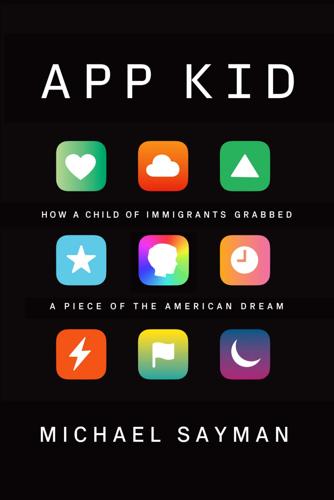
App Kid: How a Child of Immigrants Grabbed a Piece of the American Dream
by
Michael Sayman
Published 20 Sep 2021
All our employees take part in interviewing.” I followed him, nodding and smiling, into a micro-kitchen hung with splashy art prints. “Here, take a water,” said my host. “You’re in for a long haul here, you’ll need it.” The metro-lumberjack led me to a small meeting room with a giant TV screen displaying the Google Hangouts logo and said, “They should be popping up on the chat in a bit.” Then it was just me and a camera in my face, waiting. Were they already watching me? I pretended to look out the window thoughtfully. The TV flickered to life and I was facing a young Asian-American guy sitting in some other room.
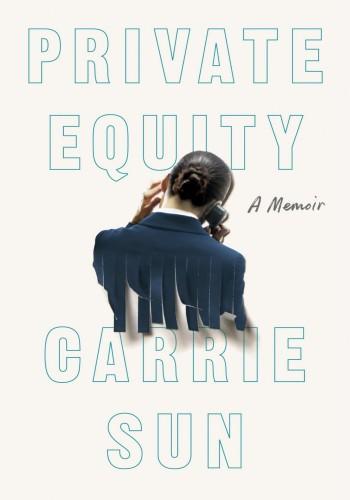
Private Equity: A Memoir
by
Carrie Sun
Published 13 Feb 2024
* * * — A FRIDAY AFTERNOON, at work, on Gchat: ME: JOSH IS STALKING ME ME: he is sending me so many linkedin messages ME: he sent me one today that was like ME: “please can we talk” ME: LEAVE ME THE F ALONE YUNA: that is the worst and it’s freaking annoying YUNA: we need to get him on a restraining order or something ME: i’ve blocked him on phone ME: gmail ME: all google (hangouts, etc.) ME: facebook ME: and linkedin ME: all avenues he’s tried to msg me ME: if he continues ME: i will consider getting a restraining order * * * — REG FD, THE DECADE-PLUS SEC rule, had been designed to even the playing field by weeding out selective disclosure. In reality, though, large institutional players got highly preferential treatment when it came to corporate access.
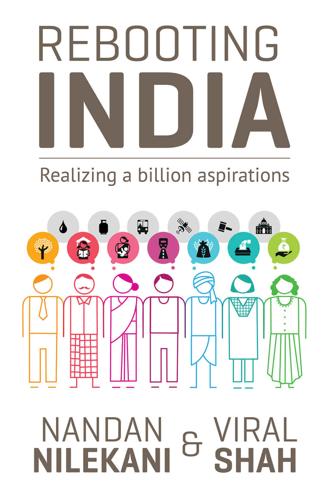
Rebooting India: Realizing a Billion Aspirations
by
Nandan Nilekani
Published 4 Feb 2016
He started building a technology team to develop the software that would power his campaign by reaching out to three former colleagues, Shankar Maruwada, Viral and Naman Pugalia, each of whom brought complementary skill sets to the table. Viral had a strong background in technology and public policy. Naman, a former member of Google’s public policy team, had helped to conduct Narendra Modi’s much-publicized Google hangout, and had a keen understanding of how both traditional and online media channels could be leveraged. Shankar had years of experience in marketing and analytics. Together, the trio went on to create a company called FourthLion Technologies—a reference to India’s national emblem, the Lion Capital of Ashoka at Sarnath, where the fourth lion that is hidden from the viewer’s gaze was envisioned by the trio as the citizen, the invisible pillar of any democracy.
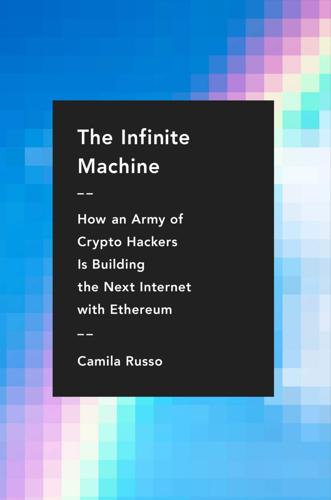
The Infinite Machine: How an Army of Crypto-Hackers Is Building the Next Internet With Ethereum
by
Camila Russo
Published 13 Jul 2020
When the time approached, they all gathered around a small laptop screen with the network monitor up. Meanwhile, a countdown was going on in the group chat for the Go Ethereum team. “250 blocks to go!!!!!!! half an hour!!!! nothing can stop it now, muahahah!:P,” wrote one of the developers. Somebody sent around a link to a Google hangout that had been set up so Ethereans around the world could celebrate the occasion, but hackers seemed more comfortable in the chat. “Nobody is speaking. Hehe.” “Too many techies,” one of them replied. “Aw. sing a song!:D,” Jeff Wilcke said. As launch time approached, coders congratulated Jeff as shipping became imminent.
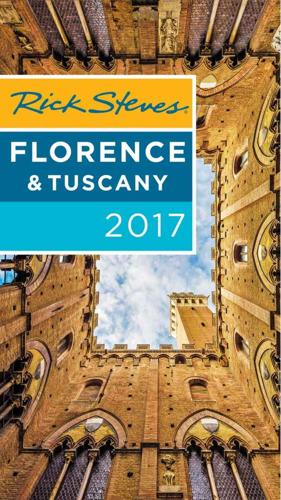
Rick Steves Florence & Tuscany 2017
by
Rick Steves
Published 8 Nov 2016
All you have to do is log on to a Wi-Fi network, then contact any of your friends or family members who are also online and signed into the same service. You can make voice and video calls using Skype, Viber, FaceTime, and Google+ Hangouts. If the connection is bad, try making an audio-only call. You can also make voice calls from your device to telephones worldwide for just a few cents per minute using Skype, Viber, or Hangouts if you buy credit first. To text for free over Wi-Fi, try apps like Google+ Hangouts, Whats App, Viber, Facebook Messenger, and iMessage. Make sure you’re on Wi-Fi to avoid data charges. USING A EUROPEAN SIM CARD IN A MOBILE PHONE This option works well for those who want to make a lot of voice calls at cheap local rates, and those who need faster connection speeds than their US carrier provides.

Cryptoassets: The Innovative Investor's Guide to Bitcoin and Beyond: The Innovative Investor's Guide to Bitcoin and Beyond
by
Chris Burniske
and
Jack Tatar
Published 19 Oct 2017
This is often referred to as the market capitalization of an asset on many current resources, but the authors prefer this term as more accurately conveying the total value of a cryptoasset. 2. https://coinmarketcap.com/. 3. http://cryptome.org/jya/digicrash.htm. 4. Ibid. 5. Ibid. 6. https://bitcoinmagazine.com/articles/quick-history-cryptocurrencies-bbtc-bitcoin-1397682630/. 7. http://karmakoin.com/how_it_works. 8. MoIP is a riff off the term “VoIP,” which stands for Voice-over-Internet-Protocol. Skype, FaceTime, and Google Hangouts are all examples of VoIP. 9. Remember that a coinbase transaction goes to the miner that discovered the block through the proof-of-work process. 10. As more machines are dedicated to mine on the network, there are more “guesses” at the solution to the PoW puzzle, which means the solution will be guessed more quickly if the difficulty of the problem is not increased.

Custodians of the Internet: Platforms, Content Moderation, and the Hidden Decisions That Shape Social Media
by
Tarleton Gillespie
Published 25 Jun 2018
And there are also plenty of social media sites that are long dead, or nearly so—Friendster, MySpace, Orkut, Revver, Veoh, Chatroulette, Ping, Delicious, Xanga, Airtime, Diaspora, Vine, Yik Yak—that also faced the challenges of moderation, and can still be illuminating examples. I did not include messaging services, which are hugely popular competitors to the platforms mentioned above. Millions regularly use WhatsApp, Facebook Messenger, QZone, WeChat, Kik, Line, Google Hangout, and Skype to communicate and congregate online. Because they are generally person-to-person or group-to-group, and overwhelmingly between known contacts, they sidestep many of the problems that plague platforms that offer public visibility and contact with strangers. But they too engage in their own forms of moderation.

Drunk: How We Sipped, Danced, and Stumbled Our Way to Civilization
by
Edward Slingerland
Published 31 May 2021
It will take years to understand the various ways in which this crisis may have negatively impacted innovation. More obvious and dramatic factors, like the stress of caring for sick loved ones or homeschooling children, clearly slash productivity and narrow one’s focus. Less obvious, perhaps, is the way in which the widespread and abrupt transition from in-person meetings to Zoom and Google Hangouts has changed the way that people talk and think. Wide-ranging chats over a few beers, sprawling over an hour or two, have been replaced by shorter video meetings focused on a specific set of agenda points. In this artificial medium, people have trouble naturally interrupting one another or smoothly navigating shifts in topic or speaker.
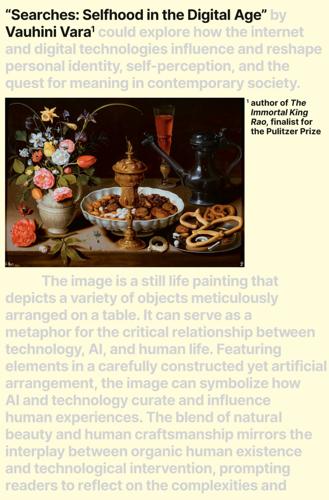
Searches: Selfhood in the Digital Age
by
Vauhini Vara
Published 8 Apr 2025
How to figure home office deduction. How to find out what’s taking space on mac. How much does dental cleaning cost. How to learn to have style. How to drink spilled sake. How much does it cost to install a closet door. How to teach 2 year old. How to win national spelling bee. How many ounces a shot. How do I accept a Google hangout. How to caulk bathtub. How to block light from room. How not to get away with murder. How do you set up a WordPress website. How long do you grill sirloin steak. How long should a child use a sippy cup. How to add contact in Whatsapp. How to address email in german. How to cut cabbage. How to potty train.
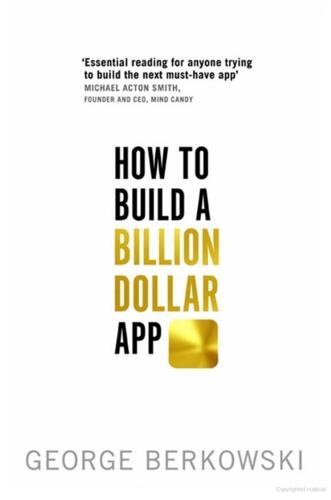
How to Build a Billion Dollar App: Discover the Secrets of the Most Successful Entrepreneurs of Our Time
by
George Berkowski
Published 3 Sep 2014
In the process, pull together a list of blogs in your relevant sector (technology and app news) as well as popular blogs that love reviewing apps (there’s a myriad of those), and then spend a few days writing a lot of emails – and be prepared to reply to a lot (and also get ready for a lot of interviews – it’s increasingly common to do them over Skype and Google Hangouts). So get out there! Social media You should already have all your social-media accounts set up. With the aid of a tool such as HootSuite you can also manage – and publish to – all those accounts from the one place (definitely a great time saver). So get ready to put some good content out there.
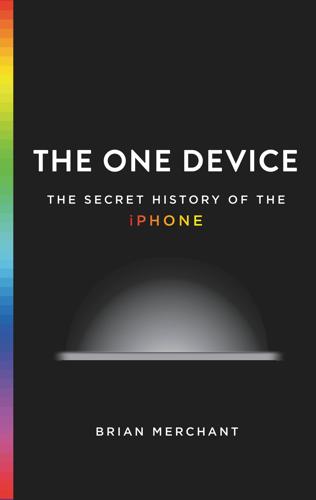
The One Device: The Secret History of the iPhone
by
Brian Merchant
Published 19 Jun 2017
The CMOS, meanwhile, is in the iPhone and has beaten out the CCD as the go-to technology for phone cameras today. You can’t talk about iPhone cameras without talking about selfies. FaceTime video streaming, which Bilbrey’s algorithms still help de-clutter, was launched as a key feature of the iPhone 4 and would join Skype and Google Hangouts as burgeoning videoconferencing apps. Apple placed the FaceTime camera on the front side of the phone, pointed toward the user, to enable the feature, which had the added effect of making it well-designed for taking selfies. Selfies are as old as cameras themselves (even older, if you count painted self-portraits).

The Ones We've Been Waiting For: How a New Generation of Leaders Will Transform America
by
Charlotte Alter
Published 18 Feb 2020
“And what became clear that night was that there weren’t any adults in charge, and the structures that should have been in place to prevent this disaster just weren’t there.” After that first meeting, Leah and Ezra dove into the online frenzy of resistance organizing. They joined Facebook groups and Google Hangouts and email chains. People were sending around Google Docs with advice on everything from hiding from government surveillance to aiding Muslims to fighting fascism. Across the country, unable to sleep, idealistic Americans—many of them young—were staying up late into the night writing feverish Facebook posts about tactics and solidarity and resistance.

Surveillance Valley: The Rise of the Military-Digital Complex
by
Yasha Levine
Published 6 Feb 2018
It went beyond search and email, broadened into word processing, databases, blogging, social media networks, cloud hosting, mobile platforms, browsers, navigation aids, cloud-based laptops, and a whole range of office and productivity applications. It could be hard to keep track of them all: Gmail, Google Docs, Google Drive, Google Maps, Android, Google Play, Google Cloud, YouTube, Google Translate, Google Hangouts, Google Chrome, Google+, Google Sites, Google Developer, Google Voice, Google Analytics, Android TV. It blasted beyond pure Internet services and delved into fiber-optic telecommunication systems, tablets, laptops, home security cameras, self-driving cars, shopping delivery, robots, electric power plants, life extension technology, cyber security, and biotech.
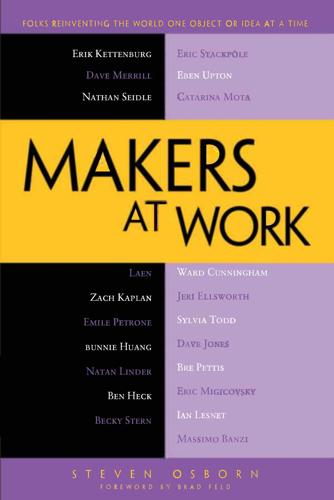
Makers at Work: Folks Reinventing the World One Object or Idea at a Time
by
Steven Osborn
Published 17 Sep 2013
I had taken a job at this company called NewTek that made video-streaming equipment. At this time, streaming video over the Internet was pioneering. I was working on this piece of hardware, which was this thing that you would hook a bunch of cameras up to it and it would stream live video. Now, with Google hangouts and Skype and all these things, it’s very common and everyone’s familiar with it. But I decided, “Maybe I need to learn about this space, and maybe I can take control of my online persona.” So I started, with a couple friends—we started doing this weekend show where we would get together and invent things.
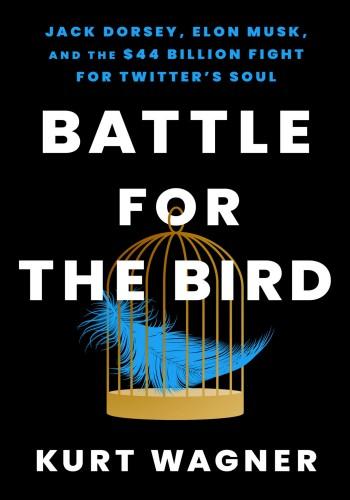
Battle for the Bird: Jack Dorsey, Elon Musk, and the $44 Billion Fight for Twitter's Soul
by
Kurt Wagner
Published 20 Feb 2024
Seuss’s Happy Birthday to You! up to the camera and moved the page back and forth so that everyone on the call could see a birthday cake pop up off the page. “Shout loud,” he continued, “I am lucky to be what I am! Thank goodness I’m not just a clam or a ham!” In April 2020, any kind of social interaction, even over Google Hangouts or Zoom, seemed like a great idea. Twitter had started Storytime to give employees and their children something to do each week while everyone was stuck working from home. With daycares and schools closed because of the growing pandemic, someone had to entertain the kids. Today that someone was Dorsey.

Dark Mirror: Edward Snowden and the Surveillance State
by
Barton Gellman
Published 20 May 2020
This was the first significant intrusion into my digital life—that I knew of. It was far from the last. Working on the NSA surveillance beat exposed me to a steady stream of evidence that I faced aggressive foes. In the last days of 2013, NSA whistleblower Tom Drake told me he had received an invitation from one of my email addresses to join me for a chat in Google Hangouts. It looked exactly like an authentic notice from Google, but Drake had the presence of mind to check whether the invitation really came from me. It did not. Somebody wanted Drake to talk to an impostor posing as me. A similar scam in mirror image caught me with my guard down. I wrote a pair of confidential messages to Tom Lowenthal, a computer scientist who sometimes advised me on security, and he wrote back to say, “I have two emails from you that I can’t read because they’re sent to an imposter key.”

Coders: The Making of a New Tribe and the Remaking of the World
by
Clive Thompson
Published 26 Mar 2019
Conversations that took place in text could stick around for years, maybe forever, on servers. What was going to happen when the rest of society started doing the same thing? That worried the computer scientist Whit Diffie. In the early 1970s, while talking with his partner, he predicted the emergence of things like Facebook and Amazon and Google Hangouts. “I told her that we were headed into a world where people would have important, intimate, long-term relationships with people they had never met face-to-face,” as he recalled in 2013. Diffie also knew that most forms of encrypting digital messages were, back then, pretty weak. That’s because they all shared one big flaw: Both parties, the one sending the message and the one receiving it, needed to have the same “key” that lets you decrypt it.
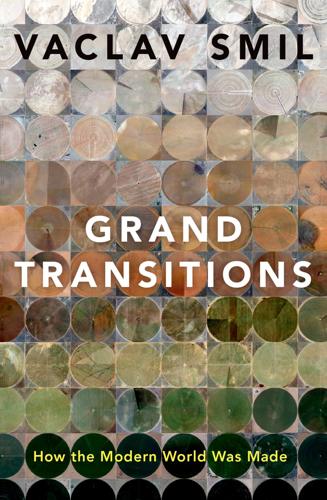
Grand Transitions: How the Modern World Was Made
by
Vaclav Smil
Published 2 Mar 2021
Starting with the typical charge for an international call in 1930, the relative cost fell by 90% in 1972, to less than 1% in 1993 and to just 0.1% in the year 2000 (OECD 2013), a 1,000-fold decline in 70 years. And during the first 15 years of the 21st century the cost fell by another order of magnitude (Figure 7.2). And in the era of e-mail, Skype, Facebook Messenger, WhatsApp, WeChat, Telegram, Viber, or Google Hangout, when an individual can reach simultaneously, and virtually cost-free, large numbers of people anywhere in the world, waiting for an operator to connect an expensive intercontinental call on an indistinct line with a distinct delay is a distant memory. Figure 7.2 Declining cost of international telephone calls.
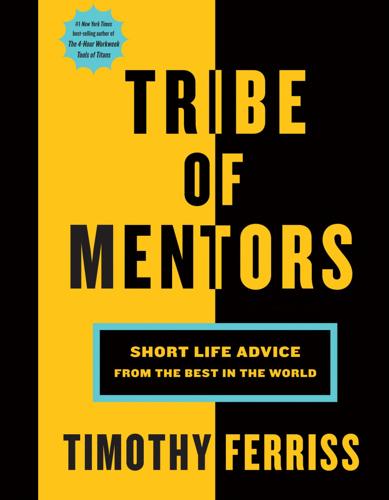
Tribe of Mentors: Short Life Advice From the Best in the World
by
Timothy Ferriss
Published 14 Jun 2017
Watching Becoming Warren Buffett on a recent flight reminded me how much of a legend Charlie is. In the last five years, what new belief, behavior, or habit has most improved your life? I like to take at least two of my meetings every day as a “walk and talk.” Even if my meeting isn’t with someone physically in the same location, I meet them on a Google Hangout on my phone and hold the screen in front of me as I walk, with headphones in. It helps me to focus and be inspired, plus the obvious health benefits. How has a failure, or apparent failure, set you up for later success? Do you have a “favorite failure” of yours? I dropped out of university to start my own company, helping businesses build websites.

Dirty Wars: The World Is a Battlefield
by
Jeremy Scahill
Published 22 Apr 2013
The Washington Post–ABC News poll determined that support for drone strikes declined “only somewhat” in cases where a US citizen was the target. President Obama and his advisers seldom mentioned the drone program publicly. In fact, the first known confirmation of the use of armed drones by the president came several years into Obama’s first term. It was not in the form of a legal brief or a press conference, but rather on a Google+ “Hangout” as the president took questions from the public. Obama was asked about his use of drones. “I want to make sure that people understand actually drones have not caused a huge number of civilian casualties,” Obama said. “For the most part, they have been very precise, precision strikes against al-Qaeda and their affiliates.